Odisha State Board BSE Odisha 10th Class Physical Science Important Questions Chapter 5 ମୌଳିକଗୁଡ଼ିକର ପର୍ଯ୍ୟାୟୀ ଶ୍ରେଣୀକରଣ Important Questions and Answers.
BSE Odisha 10th Class Physical Science Important Questions Chapter 5 ମୌଳିକଗୁଡ଼ିକର ପର୍ଯ୍ୟାୟୀ ଶ୍ରେଣୀକରଣ
Objective Type Questions with Answers
A ଗୋଟିଏ ବାକ୍ୟରେ ଉତ୍ତର ଦିଅ ।
1. ଆଧୁନିକ ପର୍ଯ୍ୟାୟ ସାରଣୀର ଗ୍ରୁପ୍ଗୁଡ଼ିକରେ ଉପରୁ ତଳକୁ ଗଲେ ମୌଳିକଗୁଡ଼ିକର ଯୋଗ୍ୟତାରେ କି ପରିବର୍ତ୍ତନ ପରିଲକ୍ଷିତ ହୁଏ
ଉ –
ସମାନ ରହେ
2. 95B ମୌଳିକ ଇଲେକ୍ଟ୍ରସଜ୍ଜା ଅନୁଯାୟୀ ଏହା କେଉଁ ଗ୍ରୁପ୍ ଓ କେଉଁ ପିରିୟଡ଼ରେ ରହିବ ?
ଉ –
5 ଓ VIIA
3. ମେଣ୍ଡେଲିଫ୍ଙ୍କ ପର୍ଯ୍ୟାୟ ସାରଣୀ ଅନୁସାରେ MgO କେଉଁ ରୂପେ ଲେଖାଯାଏ ?
ଉ –
RO
4. ମେଣ୍ଡେଲିଫ୍ଙ୍କ ପର୍ଯ୍ୟାୟ ସାରଣୀରେ ଗ୍ରୁପ୍ III ରେ ଅବସ୍ଥିତ ମୌଳିକର ଅକ୍ସାଇଡ୍ର ସଙ୍କେତଟି …………………
ଉ –
Ga
5. ମେଣ୍ଡେଲିଫ୍ଙ୍କ ପର୍ଯ୍ୟାୟ ସାରଣୀ ଗ୍ରୁପ୍ – IVରେ ଥିବା Si ର ଅକ୍ସାଇଡ୍ର ସଙ୍କେତ କେତେ ?
ଉ –
SiO2
6. ମେଣ୍ଡେଲିଫ୍ଙ୍କ ପର୍ଯ୍ୟାୟ ସାରଣୀରେ ଥିବା VI-ଗ୍ରୁପ୍ର ହାଇଡ୍ରାଇଡ୍ର ସଙ୍କେତଟି କ’ଣ ?
ଉ –
RH2
7. ଏକ ଏଲୁମିନିୟମ୍ର ପାରମାଣବିକ ବସ୍ତୁତ୍ଵ କେତେ ?
ଉ –
68
8. ମେଣ୍ଡେଲିଫ୍ଙ୍କ ପର୍ଯ୍ୟାୟ ସାରଣୀ ପ୍ରଣୀତ ହେବା ପୂର୍ବରୁ ଆବିଷ୍କୃତ ହୋଇ ଥିବା ମୌଳିକଟିର ନାମ କ’ଣ ?
ଉ –
ଆଲୁମିନିୟମ୍
9. X ମୌଳିକଟିର ଅକ୍ସାଇଡ୍ X2O3 ହେଲେ ମେଣ୍ଡେଲିଫ୍ଙ୍କ ପର୍ଯ୍ୟାୟ ସାରଣୀରେ ମୌଳିକଟି କେଉଁ ପର୍ଯ୍ୟାୟରେ ରହିବ ?
ଉ –
ଗ୍ରୁପ୍-III
10. ମେଣ୍ଡେଲିଭ୍ କେଉଁ ମୌଳିକକୁ ପର୍ଯ୍ୟାୟ ସାରଣୀରେ ନିର୍ଦ୍ଦିଷ୍ଟ ସ୍ଥାନ ଦିଆଯାଇ ପାରିବ ନାହିଁ ବୋଲି ମତବ୍ୟକ୍ତ କରିଥିଲେ ?
ଉ –
H
![]()
11. ହାଇଡ୍ରୋଜେନ୍କୁ କେଉଁ ଦୁଇଟି ଗ୍ରୁପ୍ରେ ରଖାଯାଇପାରିବ ?
ଉ –
1 ଓ 17
12. ମେଣ୍ଡେଲିଫ୍ଙ୍କ ପର୍ଯ୍ୟାୟ ସାରଣୀରେ ଥିବା ଖାଲିସ୍ଥାନରେ କେଉଁ ମୌଳିକ ପରେ ସ୍ଥାନିତ ହୋଇଥିଲା ?
ଉ –
Ge\Sc\Ga
13. RH4 ମେଣ୍ଡେଲିଫ୍ଙ୍କ ପର୍ଯ୍ୟାୟ ସାରଣୀର କେଉଁ ଗ୍ରୁପ୍ରେ ଅଛି ?
ଉ –
4
14. ମେଣ୍ଡେଲିଫ୍ଙ୍କ ପର୍ଯ୍ୟାୟ ସାରଣୀର ମୌଳିକଗୁଡ଼ିକ କେଉଁ କ୍ରମରେ ସଜାଯାଇଛି ?
ଉ –
ପାରମାଣବିକ ବସ୍ତୁତ୍ଵର ବର୍ଦ୍ଧିତ କ୍ରମ
15. ଉତ୍ପ୍ରେରକ ପ୍ଲାଟିନମ୍ ପାଇଁ କେଉଁ ବୈଜ୍ଞାନିକ ଗବେଷଣା କରିଥିଲେ ?
ଉ –
ଡୁବେରିନର୍
16. ମେଣ୍ଡେଲିଫ୍ କେତୋଟି କାର୍ଡ଼ ନେଇ ମୌଳିକଗୁଡ଼ିକର ଲେଖୁଥିଲେ ?
ଉ –
63
17. ମେଣ୍ଡେଲିଫ୍ଙ୍କ ପର୍ଯ୍ୟାୟ ସାରଣୀରେ ଏକ ଏଲୁମିନିୟମ୍ର କ୍ଲୋରାଇଡ୍ ସଙ୍କେତଟି କ’ଣ ?
ଉ –
E2Cl3
18. ମେଣ୍ଡେଲିଫ୍ ପର୍ଯ୍ୟାୟ ସାରଣୀର କେଉଁ ଗ୍ରୁପ୍ରେ RO2 ଅଛି ?
ଉ –
4
19. ‘‘ଗୋଟିଏ ମୌଳିକର ପରମାଣୁ କ୍ରମାଙ୍କ ଏହାର ପାରମାଣବିକ ବସ୍ତୁତ୍ୱଠାରୁ ଅଧିକ ପ୍ରାଥମିକ ଧର୍ମ’’ – ଏହା କେଉଁ ବୈଜ୍ଞାନିକ ଦର୍ଶାଇଥିଲେ ?
ଉ –
ମୋସଲି
20. ଆଧୁନିକ ପର୍ଯ୍ୟାୟ ସାରଣୀରେ ଥିବା ମୌଳିକ କେଉଁ କ୍ରମରେ ସଜାଯାଇଛି ?
ଉ –
ପରମାଣୁ କ୍ରମାଙ୍କ ବର୍ଦ୍ଧିତ କ୍ରମରେ 18
21. ଆଧୁନିକ ପର୍ଯ୍ୟାୟ ସାରଣୀର ଗ୍ରୁପ୍-2 ଏବଂ ପର୍ଯ୍ୟାୟ-4ରେ ଥିବା ମୌଳିକ (M) ସହ ଗ୍ରୁପ୍-17 ଏବଂ ପର୍ଯ୍ୟାୟ-3ରେ ଥବା ମୌଳିକ (N)ର ରାସାୟନିକ ପ୍ରତିକ୍ରିୟାରୁ ସୃଷ୍ଟ ଯୌଗିକର ସଂକେତ କ’ଣ ହେବ ?
ଉ –
MN2
22. ଆଧୁନିକ ପର୍ଯ୍ୟାୟ ସାରଣୀରେ ଗ୍ରୁପ୍-18କୁ କେଉଁ ଗ୍ରୁପ୍ କୁହାଯାଏ ?
ଉ –
ଟ୍ରାନ୍ସନ୍ ଗ୍ରୁପ୍
23. Cl, Br, I ଇତ୍ୟାଦି ମୌଳିକ ଗୁଡ଼ିକ କେଉଁ ଗ୍ରୁପ୍ରେ ଅଛନ୍ତି ?
ଉ –
17
24. ଚତୁର୍ଥ ଓ ପଞ୍ଚମ ପିରିୟର୍ଡ଼ର ମୌଳିକ ସଂଖ୍ୟା ମିଶି କେତେ ?
ଉ –
36
25. ପର୍ଯ୍ୟାୟ ସାରଣୀର କେଉଁ ପିରିୟଡ଼କୁ କ୍ଷୁଦ୍ର ପିରିୟଡ଼ କହନ୍ତି ?
ଉ –
1ମ, 2ୟ ଓ 3ୟ
26. ଗ୍ରୁପ୍ 14ର ଏକ ମୌଳିକର ଇଲେକ୍ଟ୍ରନ୍ ସଂରଚନା X, Y ଓ 4 ହେଲେ X ଓ Yର ମାନ କେତେ ?
ଉ –
2, 8
27. ଲାନ୍ନାନାଇଡ୍ ଗ୍ରୁପ୍ରେ ମୌଳିକମାନଙ୍କର ସଂଖ୍ୟା କେତେ ?
ଉ –
14
28. ନିଉଲାଣ୍ଡଙ୍କ ଅଷ୍ଟକ ନିୟମରେ ଲିଥୁମ୍ ସହ କେଉଁ ମୌଳିକର ଧର୍ମର ସାଦୃଶ୍ୟ ଥିଲା ?
ଉ –
ସୋଡ଼ିୟମ୍
29. ପର୍ଯ୍ୟାୟ ସାରଣୀର ପ୍ରଥମ ଗ୍ରୁପ୍ର କେଉଁ ମୌଳିକର ବ୍ୟାସାର୍ଦ୍ଧ ସବୁଠାରୁ ଛୋଟ ?
ଉ –
K
![]()
30. A, B, C, D ମୌଳିକଗୁଡ଼ିକର ପରମାଣୁ କ୍ରମାଙ୍କ ଯଥାକ୍ରମେ 11, 12, 17 ହେଲେ ଏଗୁଡ଼ିକ କେଉଁ ପର୍ଯ୍ୟାୟରେ ରହିବେ ?
ଉ –
3
31. କେଉଁ ପର୍ଯ୍ୟାୟଗୁଡ଼ିକର ମୌଳିକ ସଂଖ୍ୟା ମିଶି ଚତୁର୍ଥ ପର୍ଯ୍ୟାୟର ମୌଳିକ ସଂଖ୍ୟା ସହ ସମାନ ?
ଉ –
1, 2 ଓ 3
32. ଆଧୁନିକ ପର୍ଯ୍ୟାୟ ସାରଣୀର ଦ୍ବିତୀୟ ପର୍ଯ୍ୟାୟର ବାହ୍ୟତମ କକ୍ଷଟିର ନାମ କ’ଣ ?
ଉ –
L କକ୍ଷ
33. ପିକୋମିଟର କେତେ ପେ.ମି. ?
ଉ –
10-10
34. ଗ୍ରୁପ୍-17 ରେ ଥିବା ମୌଳିକଗୁଡ଼ିକୁ କ’ଣ କୁହାଯାଏ ?
ଉ –
ହାଲୋଜେନ୍
35. କେଉଁ ମୌଳିକର ଦ୍ଵିତୀୟ କକ୍ଷରେ ଥିବା ଇଲେକ୍ଟ୍ରନ୍ ସଂଖ୍ୟା ପ୍ରଥମ କକ୍ଷରେ ଥିବା ଇଲେକ୍ଟ୍ରନ୍ ସଂଖ୍ୟାର ଦୁଇଗୁଣ ଅଟେ ?
ଉ –
କାର୍ବନ୍
36. ଡୁବେରିନର କେଉଁ ମସିହାରେ ଅନୁରୂପ ଧର୍ମ ଥିବା ମୌଳିକଗୁଡ଼ିକୁ ନେଇ ସଜାଇବାକୁ ଉଦ୍ୟମ କରିଥିଲେ ?
ଉ –
1817
37. କ୍ୟାଲ୍ସିୟମ୍ର ପାରମାଣବିକ ବସ୍ତୁତ୍ଵ କେତେ ?
ଉ –
40.1
38 As ର ପାରମାଣବିକ ବସ୍ତୁତ୍ଵ କେତେ ?
ଉ –
74.9
39. ଡୁବେରିନର ଟ୍ରାଇଏଡ୍ରେ CI ଓ Iର ହାରାହାରି ବସ୍ତୁତ୍ଵ କାହାର ବସ୍ତୁତ୍ଵ ସହ ପ୍ରାୟ ସମାନ ?
ଉ –
Br
40. ଡୁବେରିନର କେତୋଟି ଟ୍ରାଇଏଡ୍ ଚିହ୍ନଟ କରି ପାରିଥିଲେ ?
ଉ –
3ଟି
41. ନିଉଲାଣ୍ଡ କାହାକୁ ଆଧାର କରି ମୌଳିକମାନଙ୍କର ସଜ୍ଜୀକରଣ କରିଥିଲେ ?
ଉ –
ପାରମାଣବିକ ବସ୍ତୁତ୍ୱ
42. ନିଉଲାଣ୍ଡଙ୍କର ସଜ୍ଜୀକରଣରେ ମୋଟ କେତୋଟି ମୌଳିକ ସ୍ଥାନ ପାଇଥିଲା ?
ଉ –
56
43. ପଞ୍ଚମ ପର୍ଯ୍ୟାୟର ମୌଳିକ ସଂଖ୍ୟା ଦ୍ଵିତୀୟ ପର୍ଯ୍ୟାୟର ମୌଳିକ ସଂଖ୍ୟାଠାରୁ କେତେ ଅଧିକ ?
ଉ –
10
44. ଏକ ମୌଳିକର ପରମାଣୁର ନ୍ୟୁକ୍ଲିୟସରୁ ଗୋଟିଏ ନ୍ୟୁଟ୍ରନ୍ କାଢ଼ି ନିଆଗଲେ ତାହାର କ’ଣ ବଦଳିଥାଏ ?
ଉ –
ବସ୍ତୁତ୍ୱ ସଂଖ୍ୟା
45. ମୌଳିକଗୁଡ଼ିକ A, B, C, Dର ପରମାଣୁ କ୍ରମାଙ୍କ ଯଥାକ୍ରମେ 3, 4, 5, 11 । କେଉଁ ଦୁଇଟି ମୌଳିକ ଗୋଟିଏ ଗ୍ରୁପ୍ରେ ରହିବେ ?
ଉ –
A, D
46. ଏକ ମୌଳିକର ଇଲେକ୍ଟ୍ରନ ସଂରଚନା 2, 8, 8 ହେଲେ, ଏହା କେଉଁ ଗ୍ରୁପ୍ରେ ରହିବ ?
ଉ –
18
47. ସର୍ବାଧିକ ଯୌଗିକ ସୃଷ୍ଟିକରୁଥିବା ମୌଳିକ କେଉଁ ଗ୍ରୁପ୍ରେ ଅବସ୍ଥିତ ?
ଉ –
14
48. ତୃତୀୟ ପର୍ଯ୍ୟାୟରେ ଥିବା ମୌଳିକର ବହିଃସ୍ଥ କକ୍ଷଟି କ’ଣ ?
ଉ –
M କକ୍ଷ
49. ସଂଯୋଜକ କକ୍ଷରେ ତିନୋଟି ଇଲେକ୍ଟ୍ରନ୍ ସହିତ ସମୁଦାୟ ଦୁଇଟି କକ୍ଷ ଥିବା ମୌଳିକର ନାମ କ’ଣ ?
ଉ –
ବୋରନ୍
![]()
50. ଦୀର୍ଘକାୟ ପର୍ଯ୍ୟାୟ ସାରଣୀର କେଉଁ ଗ୍ରୁପରେ ବ୍ରୋମିନ୍ ଅଛି ?
ଉ –
17
51. କେଉଁ ଗ୍ରୁପ୍ର ପରମାଣୁର ବହିଃସ୍ଥ କକ୍ଷରେ 2ଟି ଇଲେକ୍ଟ୍ରନ ଅଛି ?
ଉ –
2
52. ଯେଉଁ ମୌଳିକର ପରମାଣୁ କ୍ରମାଙ୍କ 19 ତାହା ଆଧୁନିକ ପର୍ଯ୍ୟାୟ ସାରଣୀର କେଉଁ ପର୍ଯ୍ୟାୟରେ ଅବସ୍ଥିତ ?
ଉ –
ଚତୁର୍ଥ
53. ପର୍ଯ୍ୟାୟ ସାରଣୀର କେଉଁ ଗ୍ରୁପ୍ରେ ସର୍ବାଧିକ ମୌଳିକ ଅଛନ୍ତି ?
ଉ –
3
54. ଆଧୁନିକ ପର୍ଯ୍ୟାୟ ସାରଣୀରେ ସଲ୍ଫର୍ କେଉଁ ଗ୍ରୁପ୍ରେ ସ୍ଥାନ ପାଇଛି ?
ଉ –
16
55. ହାଇଡ୍ରୋଜେନ୍ ପରମାଣୁର ବ୍ୟାସାର୍ଦ୍ଧ କେତେ ?
ଉ –
37 PM
56. ଗ୍ରୁପ୍ 15ର ମୌଳିକମାନଙ୍କର ବାହ୍ୟତମ କକ୍ଷରେ କେତୋଟି ଇଲେକ୍ଟ୍ରମ୍ ଅଛି ?
ଉ –
13
57. ଆଇସୋଟୋପ୍ଗୁଡ଼ିକର କ’ଣ ସମାନ ଥାଏ ?
ଉ –
ପରମାଣୁ କ୍ରମାଙ୍କ
58 ନିଷ୍କ୍ରିୟ ମୌଳିକଗୁଡ଼ିକର ଯୋଗ୍ୟତା କେତେ ?
ଉ –
0
59. ମେଣ୍ଡେଲିଫ୍ଙ୍କ ପର୍ଯ୍ୟାୟ ସାରଣୀରେ ଥିବା ଚତୁର୍ଥ ପର୍ଯ୍ୟାୟର ଦ୍ୱିତୀୟ ସିରିଜର ପ୍ରଥମ ମୌଳିକର ନାମ କ’ଣ ?
ଉ –
Cu
60. କୋବାଲଟ ଓ ନିକେଲର ପରମାଣବିକ ବସ୍ତୁତ୍ଵର ସମଷ୍ଟି କେତେ ?
ଉ –
117.6
61. Baର ପାରମାଣବିକ ବସ୍ତୁତ୍ଵ କେତେ ?
ଉ –
137.3
62. ଆଧୁନିକ ପର୍ଯ୍ୟାୟ ସାରଣୀରେ ଲାନ୍ତାନାଇଡ୍ କେଉଁ ମୌଳିକଠାରୁ ଆରମ୍ଭ ହୋଇ କେଉଁ ମୌଳିକରେ ଶେଷ ହୋଇଛି ?
ଉ –
ସିସିୟମ୍ ଓ ଲୁଟେସିୟମ୍
63. ଆଧୁନିକ ପର୍ଯ୍ୟାୟ ସାରଣୀରେ ପଞ୍ଚମ ଓ ଷଷ୍ଠ ପର୍ଯ୍ୟାୟରେ କେତୋଟି ଲେଖାଏଁ ମୌଳିକ ଅଛି ?
ଉ –
18, 32
64. ଏ କେଉଁ କଥାକୁ ବ୍ୟର ଅପରିବାହିତ ରେଡ଼ିଓ, ଟେଲିଭିଜନ ଆଦିରେ ବ୍ୟବହାର କରାଯାଇଥାଏ ?
ଉ –
ସିଲିକନ୍ ଓ ଜର୍ମାନିୟମ୍ ।
B ଶୂନ୍ୟସ୍ଥାନ ପୂରଣ କର ।
1. ଆଧୁନିକ ପର୍ଯ୍ୟାୟ ସାରଣୀରେ ନିଷ୍କ୍ରିୟ ଗ୍ୟାସ୍ଗୁଡ଼ିକ ……………….. ତମ ଗ୍ରୁପ୍ରେ ସ୍ଥାନିତ ହୋଇଛନ୍ତି ।
2. ତିନୋଟି ଲେଖାଏଁ ମୌଳିକର ଗ୍ରୁପଗୁଡ଼ିକୁ ………………… କହନ୍ତି ।
3. Ca ଓ Baର ହାରାହାରି ବସ୍ତୁତ୍ଵ – -ର ବସ୍ତୁତ୍ୱ ସହ ପ୍ରାୟ ସମାନ ।
4. Ca -ର ପର୍ଯ୍ୟନ୍ତ ପ୍ରଯୁଜ୍ୟ ……………….. ।
5. ନିଉଲାଣ୍ଡ ହାଇଡ୍ରୋଜେନ୍ଠାରୁ ଆରମ୍ଭକରି
6. ନିଉଲାଣ୍ଡଙ୍କ ଅଷ୍ଟକରେ ଲିଥ୍ମର ଧର୍ମସହ ……………….. ର ଧର୍ମର ସାଦୃଶ୍ୟ ଅଛି ।
7. ନିଜଲାଣ୍ଡଙ୍କ ଅଷ୍ଠକ ନିଯମ କେବଳ ………………………. ପର୍ଯ୍ୟନ୍ତ ପ୍ରଯୁଜ୍ୟ ।
8. ………………. ଟି ମୌଳିକ ଅଛି ବୋଲି ନିଉଲାଣ୍ଡଙ୍କ ଧାରଣା ଥିଲା ।
9. ମେଣ୍ଡେଲିଫ୍ଙ୍କ ପର୍ଯ୍ୟାୟ ସାରଣୀରେ ………………. ଟି ମୌଳିକ ସ୍ଥାନିତ ହୋଇଛି ।
10. ପର୍ଯ୍ୟାୟ ସାରଣୀର ସ୍ତମ୍ଭକୁ …………….. କହନ୍ତି ।
11. ପର୍ଯ୍ୟାୟ ସାରଣୀର ଧାଡ଼ିକୁ …………….. କହନ୍ତି ।
12. ମେଣ୍ଡେଲିଫ୍ଙ୍କ ପର୍ଯ୍ୟାୟ ସାରଣୀ …………………. ମସିହାରେ ଜର୍ମାନୀର ଏକ ପତ୍ରିକାରେ ପ୍ରକାଶ ପାଇଥିଲା ।
13. ମେଣ୍ଡେଲିଫ୍ଙ୍କ ପର୍ଯ୍ୟାୟ ସାରଣୀରେ ………………… ଅକ୍ଷର ସେହି ଗ୍ରୁପର ଯେକୌଣସି ମୌଳିକକୁ ସୁଚାଇବାପାଇଁ ବ୍ୟବହାର କରାଯାଇଚ୍ଛି |
14. ମେଣ୍ଡେଲିଫ୍ ନୂଆ ମୌଳିକପାଇଁ ………………… ଶବ୍ଦ୍ଵ ବ୍ୟବହାର କରିଥିଲେ |
15. ମୌଳିକଗୁଡ଼ିକର ପରମାଣୁ କ୍ରମାଙ୍କ ସମାନଥାଇ ବସ୍ତୁତ୍ୱ ସଂଖ୍ୟା ଭିନ୍ନ ପରମାଣୁକୁ
16. ମେଣ୍ଡେଲିଫ୍ଙ୍କ ପର୍ଯ୍ୟାୟ ସାରଣୀରେ MgO ର ସଙ୍କେତ ……………….. |
17. ଆଧୁନିକ ପର୍ଯ୍ୟାୟ ସାରଣୀର ପ୍ରବର୍ତ୍ତକ ………………… |
18. ପରମାଣୁକ୍ରମାଙ୍କ ପରମାଣୁର ନ୍ୟୁକ୍ଲିୟସରେ ଥିବା ……………………… ସଂଖ୍ୟାକୁ ଦର୍ଶାଏ ।
19. ଆଧୁନିକ ପର୍ଯ୍ୟାୟ ସାରଣୀର ମୂଳତତ୍ତ୍ୱ ………………. |
20. ମେଣ୍ଟେଲିଫ୍ଙ୍କ ପର୍ଯ୍ୟାୟ ସାରଣୀର ମୂଳତତ୍ତ୍ୱ ……………… |
21. ଏକ ମୌଳିକର ……………….. ପର୍ଯ୍ୟାୟ ସାରଣୀର ସମାନ ଗ୍ରୁପରେ ରହିବ ।
22. ଆଧୁନିକ ପର୍ଯ୍ୟାୟ ସାରଣୀରେ ……………….. ଟି ଗ୍ରୁପ ଅଛି ।
23. ଆଧୁନିକ ପର୍ଯ୍ୟାୟ ସାରଣୀରେ …………………. ଟି ପର୍ଯ୍ୟାୟ ଅଛି ।
24. ଆଧୁନିକ ପର୍ଯ୍ୟାୟ ସାରଣୀର ………………… ପର୍ଯ୍ୟାୟ ଅସଂପୂର୍ଣ୍ଣ ଅଟେ ।
25. ଏକ ବୋରନ୍ର ଧର୍ମ ………………….. ର ଧର୍ମ ସହ ସମାନ ।
26. ଗ୍ରୁପ୍ର ଉପରୁ ତଳକୁ କକ୍ଷ ସଂଖ୍ୟା ……………….. ହୋଇଥାଏ ।
27. ……………………. ମୌଳିକର ସ୍ଥାନର ଅସଙ୍ଗତ ଦେଖାଦେଇଛି ।
28. Càର ପରମାଣୁ କ୍ରମାଙ୍କ 20 ହେଲେ ଯୋଗ୍ୟତା ………………… |
29. ଗୋଟିଏ ଗ୍ରୁପ୍ରେ ଥିବା ମୌଳିକଗୁଡ଼ିକର ଯୋଗ୍ୟତା ………………… |
30. ପରମାଣୁର ଆକାର ପରମାଣୁର ………………… କୁ ସୂଚାଏ ।
31. ହାଇଡ୍ରୋଜେନ୍ ପରମାଣୁର ଆକାର ……………………….. pm |
32. ସପ୍ତମ ପର୍ଯ୍ୟାୟରେ ଥିବା ମୌଳିକ ଗୁଡ଼ିକର …………………. ଟିଂ କକ୍ଷ ଅଛି ।
33. ପର୍ଯ୍ୟାୟର ବାମରୁ ଡାହାଣକୁ ପରମାଣୁର ବ୍ୟାସାର୍ଦ୍ଧ …………………. |
34. ନାଇଟ୍ରୋଜେନ୍ ପରମାଣୁର ବ୍ୟାସାର୍ଦ୍ଧ ……………… pm |
35. ପରମାଣୁର ଆକାର ଉପରୁ ତଳକୁ କ୍ରମାଗତଭାବେ …………………. ହୁଏ ।
36. Li ପରମାଣୁର ଆକାର ………………….. pm |
37. Li ଓ B ମଧ୍ୟରେ …………………… ର ଆକାର ବଡ଼ ।
38. 2ୟ ଗ୍ରୁପ୍ରେ ଥିବା ମୌଳିକଗୁଡ଼ିକର ବହିଃସ୍ଥ କକ୍ଷରେ …………………….. ଟି ଇଲେକ୍ଟ୍ରନ ଅଛି ।
39. Li ଓ Cs ମଧ୍ୟରେ ………………………. ର ପରମାଣୁର ଆକାର ସାନ ।
40. ଉଭୟ ଧାତୁ ଓ ଅଧାତୁ ଗୁଣ ପ୍ରଦର୍ଶନ କରୁଥିବା ମୌଳିକକୁ …………………… କହନ୍ତି ।
41. ମୌଳିକ …………………. ତ୍ୟାଗକରି ବିଦ୍ୟୁତ୍ ଯୁକ୍ତାତ୍ମକ ହୋଇଥାଏ ।
42. ମୌଳିକ ଗୁଡ଼ିକର ଧାତବ ପ୍ରକୃତି ବାମରୁ ଡାହାଣକୁ …………………….
43. ମୌଳିକ ଗୁଡ଼ିକର ଧାତବ ଗୁଣ ଉପରୁ ତଳକୁ ……………………. |
44. ଆଧୁନିକ ପର୍ଯ୍ୟାୟ ସାରଣୀର ତୃତୀୟ ପର୍ଯ୍ୟାୟରେ ……………………… ଟି ମୌଳିକ ଅଛି ।
45. Ne ଏକ ……………… ଗ୍ୟାସ୍ |
46. ଗ୍ରୁପ୍ 13ରେ ଥିବା ମୌଳିକଗୁଡ଼ିକର ବାହ୍ୟତମ କକ୍ଷରେ …………………….ଟି ଇଲେକ୍ଟ୍ରନ୍ ଅଛି ।
47. ନିଉଲାଣ୍ଡଙ୍କ ଅଷ୍ଟକ ନିୟମରେ ଦୁଇଟି ସାମଞ୍ଜସ୍ୟ ଥିବା ମୌଳିକ ମଧ୍ୟରେ …………………. ଟି ମୌଳିକ ଅବସ୍ଥିତ ।
48. ମେଣ୍ଡେଲିଫ୍ଙ୍କ ପର୍ଯ୍ୟାୟ ସାରଣୀରେ ମୌଳିକଗୁଡ଼ିକର ପ୍ରାଥମିକ ଧର୍ମ ……………………… |
49. ମେଣ୍ଡେଲିଫ୍ଙ୍କ ପର୍ଯ୍ୟାୟ ସାରଣୀରେ କାର୍ଯ୍ୟ ଆରମ୍ଭ କଲାବେଳେ …………………. ଟି ମୌଳିକ ଜଣାଥିଲା ।
50. ଗୋଟିଏ ମୌଳିକର ଶ୍ରେଣୀକରଣ ପାଇଁ ମେଣ୍ଡେଲିଫ୍ …………………. ଓ …………………. ସଙ୍କେତଗୁଡ଼ିକୁ ଏକ ମୂଳଧର୍ମ ଭାବେ
51. Na ଓ Ar ମଧ୍ୟରୁ ……………….. ର ପରମାଣୁର ଆକାର ବଡ଼ ।
52. ମେଣ୍ଡେଲିଫ୍ଙ୍କ ପର୍ଯ୍ୟାୟ ସାରଣୀର R ଅକ୍ଷର ସେହି ଗ୍ରୁପର ………………… କୁ ସୂଚାତାଛି |
53. ମେଣ୍ଡେଲିଫ୍ଙ୍କ ପର୍ଯ୍ୟାୟ ସାରଣୀରେ ସୋଡ଼ିୟମ୍ ଅକ୍ସାଇଡ଼ Na2O କୁ ………………. ରୂପେ ଲେଖାଯାଏ
54. ମୌଳିକଗୁଡ଼ିକର ସେହି ଗ୍ରୁପ୍ର ପୂର୍ବବର୍ତୀ ମୌଳିକର ନାମ ପୂର୍ବରୁ ସଂସ୍କୃତ ଶବ୍ଦ ………………………… ବ୍ୟବହାର କରିଥିଲେ ।
55. ଆଲୁମିନିୟମ୍ର ପାରମାଣବିକ ବସ୍ତୁତ୍ଵ …………………… |
56. ମୌଳିକର ଆଇସୋଟୋପ୍ଗୁଡ଼ିକରେ ରାସାୟନିକ ପ୍ରକୃତି ସମାନ; କିନ୍ତୁ ………………………… ଭିନ୍ନ ।
57. ……………… ମୌଳିକର ସ୍ଥାନ ଅସଙ୍ଗତି ପରିଲକ୍ଷିତ ହୁଏ ।
58. ମୌଳିକର ବହିଃସ୍ଥ କକ୍ଷରେ ଥିବା ଇଲେକ୍ଟ୍ରିକୁ ………………… କହନ୍ତି ।
59. ଉଭୟ ଧାତୁ ଓ ଅଧାତୁର ଗୁଣ ପ୍ରଦର୍ଶନ କରୁଥିବା ମୌଳିକଗୁଡ଼ିକୁ ……………………. କହନ୍ତି ।
Answer:
1. 18
2. ଟ୍ରାଇଏଡ୍
3. Sr
4. 40.1
5. ଥୋରିୟମ୍
6. ସୋଡ଼ିୟମ୍
7. କ୍ୟାଲସିୟମ୍
8.56
9.63
10. ଗ୍ରୁପ୍
11. ପର୍ଯ୍ୟାୟ
12. 1872
13. R
14. ଏକ
15. ଆଇସୋଟୋପ୍
16. RO
17. ହେନରୀ ମୋସଲୀ
18. ପ୍ରୋଟନ
19. ପରମାଣୁ କ୍ରମାଙ୍କ
20. ପାରମାଣବିକ ବସ୍ତୁତ୍ଵ
21. ଆଇସୋଟୋପ୍
22.18
23.7
24.79
25. ସ୍କାଣ୍ଡିୟମ୍
26. ବଢ଼ିଥାଏ
27. ହାଇଡ୍ରୋଜେନ୍
28.2
29. ସମାନ
30. ବ୍ୟାସାର୍ଦ୍ଧ
31.37
32.76
33. କମେ
34. 74
35. ବୃଦ୍ଧି
36. 152
37. Li
38.2
39. Li
40. ଉପଧାତୁ
41. ଇଲେକ୍ଟ୍ରନ୍
42. କମେ
43. ବୃଦ୍ଧି ହୁଏ ।
44. 8
45. ବିରଳ ଗ୍ୟାସ୍
46.3
47.6
48. ପାରମାଣବିକ ବସ୍ତୁତ୍ଵ
49.63
50. ହାଇଡ୍ରାଇଡ୍ ଓ ଅକ୍ସାଇଡ୍
51. Na
52. ମୌଳିକ
53. R2O
54. ଏକ (Eka)
55.69.7
56. ପାରମାଣବିକ ବସ୍ତୁତ୍ଵ
57. ହାଇଡ୍ରୋଜେନ୍
58. ସଂଯୋଜକ ଇଲେକ୍ଟ୍ରନ୍
59. ଉପଧାତୁ
![]()
C ଠିକ୍ ଉକ୍ତି ପାଇଁ (✓) ବା ଭୁଲ ଉକ୍ତି ପାଇଁ (x) ଲେଖ ।
1. ପରମାଣୁ ସଂଖ୍ୟା ସମାନ ଓ ବସ୍ତୁତ୍ୱ ସଂଖ୍ୟା ଭିନ୍ନ ଥିବା ପରମାଣୁଗୁଡ଼ିକୁ ଆଇସୋବାର କହନ୍ତି ।
2. ଆଧୁନିକ ପର୍ଯ୍ୟାୟ ସାରଣୀରେ ଷଷ୍ଠ ପର୍ଯ୍ୟାୟରେ ସବୁଠାରୁ ବେଶୀ ମୌଳିକ ସ୍ଥାନ ପାଇଛନ୍ତି ।
3. ମେଣ୍ଡେଲିଫ୍ଙ୍କ ପର୍ଯ୍ୟାୟ ନିୟମ ହେଲା ମୌଳିକମାନଙ୍କର ଗୁଣ ସେଗୁଡ଼ିକର ପରମାଣୁ କ୍ରମାଙ୍କର ପର୍ଯ୍ୟାୟଫଳନ ।
4. ନିଉଲାଣ୍ଡଙ୍କ ଧାରଣା ଥିଲା ପ୍ରକୃତିରେ କେବଳ 56ଟି ମୌଳିକ ଅଛି ଓ ଭବିଷ୍ୟତରେ ଆଉ ମୌଳିକ ଆବିଷ୍କାର ହେବ ନାହିଁ ।
5. ମୌଳିକଗୁଡ଼ିକର ପର୍ଯ୍ୟାୟ ଶ୍ରେଣୀକରଣର ଜନକ ହେଉଛନ୍ତି ‘ହେନେରୀ ମୋସ୍’ ।
6. ଆଧୁନିକ ପର୍ଯ୍ୟାୟ ସାରଣୀରେ ଯଥାକ୍ରମେ ପର୍ଯ୍ୟାୟ ଓ ଗ୍ରୁପ୍ ସଂଖ୍ୟା 7, 18 ।
7. ଆଧୁନିକ ପର୍ଯ୍ୟାୟ ସାରଣୀରେ ଗ୍ରୁପ୍-18କୁ ଲାନ୍ତାନାଇଡ୍ ଗ୍ରୁପ୍ କୁହାଯାଏ ।
୫. ଚତୁର୍ଥ ଓ ପଞ୍ଚମ ପିରିୟଡ଼ର ମୌଳିକ ସଂଖ୍ୟା ମିଶି 36 ।
୨. . ଗ୍ରୁପ୍ 14ର ଏକ ମୌଳିକର ଇଲେକ୍ଟ୍ରନ୍ ସଂରଚନା X, Y ଓ 4 ହେଲେ X ଓ Yର ମାନ 2, 6 |
10. ଲାନ୍ତାନାଇଡ୍ ଗ୍ରୁପ୍ରେ ମୌଳିକମାନଙ୍କର ସଂଖ୍ୟା 14 ।
11. Bର ପରମାଣୁର ବ୍ୟାସାର୍ଦ୍ଧ 152 |
12. A, B, C, D ମୌଳିକଗୁଡ଼ିକର ପରମାଣୁ କ୍ରମାଙ୍କ ଯଥାକ୍ରମେ 11, 12, 17 ହେଲେ ଏଗୁଡ଼ିକ 3 ପର୍ଯ୍ୟାୟରେ ରହିବେ ।
13. 1, 2 ଓ 3 ପର୍ଯ୍ୟାୟଗୁଡ଼ିକର ମୌଳିକ ସଂଖ୍ୟା ମିଶି ଚତୁର୍ଥ ପର୍ଯ୍ୟାୟର ମୌଳିକ ସଂଖ୍ୟା ସହ ସମାନ ।
14. 1 ପିବେ।ମିଟର 10-10 ସେ.ମି. |
15. Coର ପାରମାଣବିକ ବସ୍ତୁତ୍ୱ 58.9 ।
16, ପଞ୍ଚମ ପର୍ଯ୍ୟାୟର ମୌଳିକ ସଂଖ୍ୟା ଦ୍ୱିତୀୟ ପର୍ଯ୍ୟାୟର ମୌଳିକ ସଂଖ୍ୟାଠାରୁ ୫ ଅଧ୍ଵ ।
17. ହାଇଡ୍ରୋଜେନର ଇଲେକ୍ଟ୍ରନ୍ ସଂରଚନା K ଧାତୁ ସହ ସମାନ ।
18. ଏକ ମୌଳିକର ଇଲେକ୍ଟ୍ରନ୍ ସଂରଚନା 2, 8, 8 ହେଲେ ଏହା 18 ଗ୍ରୁପ୍ରେ ରହିବ ।
19. ସର୍ବାଧିକ ଯୌଗିକ ସୃଷ୍ଟି କରୁଥିବା ମୌଳିକ ଗ୍ରୁପ୍ 15 ରେ ଅବସ୍ଥିତ ।
20. ଆଧୁନିକ ପର୍ଯ୍ୟାୟ ସାରଣୀରେ 18ଟି ଗ୍ରୁପ ଅଛି ।
21. ଦୀର୍ଘକାୟ ପର୍ଯ୍ୟାୟ ସାରଣୀର ଗ୍ରୁପ 17 ରେ ବ୍ରୋମିନ୍ ଅଛି ।
22. ଯେଉଁ ମୌଳିକର ପରମାଣୁ କ୍ରମାଙ୍କ 19 ତାହା ଆଧୁନିକ ପର୍ଯ୍ୟାୟ ସାରଣୀର ତୃତୀୟ ପର୍ଯ୍ୟାୟରେ ଅବସ୍ଥିତ ।
23. ମେଣ୍ଡେଲିଫ୍ଙ୍କ ପର୍ଯ୍ୟାୟ ସାରଣୀ ଗ୍ରୁପ୍ – IVରେ ଥିବା Si ର ଅକ୍ସାଇଡ୍ର ସଙ୍କେତ SiO2 |
24. ଦୁଇଟି ମୌଳିକ X ଓ Y ନିଉଲାଣ୍ଡଙ୍କ ଅଷ୍ଟକ ନିୟମର ଅନ୍ତର୍ଗତ ହେଲେ X ଓ Y ମଧ୍ଯରେ ସର୍ବନିମ୍ନ ମୌଳିକ ସଂଖ୍ୟା ୫ ।
25. ଗ୍ରୁପ୍ 14ର ଏକ ମୌଳିକର ଇଲେକ୍ଟ୍ରନ୍ ସଂରଚନା X, Y ଓ 4 ହେଲେ X ଓ Yର ମାନ 2, 6 |
26. ଆଧୁନିକ ପର୍ଯ୍ୟାୟ ସାରଣୀରେ ଗ୍ରୁପ୍-18କୁ ଟ୍ରାନ୍ସନ୍ ଗ୍ରୁପ୍ କୁହାଯାଏ ।
27. ମେଣ୍ଡେଲିଫ୍ଙ୍କ ପର୍ଯ୍ୟାୟ ସାରଣୀର ମୌଳିକଗୁଡ଼ିକ ପାରମାଣବିକ ବସ୍ତୁତ୍ଵର ହ୍ରାସକ୍ରମରେ ସଜାଯାଇଛି ।
28. ସର୍ବାଧିକ ଯୌଗିକ ସୃଷ୍ଟିକରୁଥିବା ମୌଳିକ 12 ଗ୍ରୁପ୍ରେ ଅବସ୍ଥିତ ।
29. ଡୁବେରିନ୍ର 3ଟି ଟ୍ରାଇଏଡ୍ ଚିହ୍ନଟ କରି ପାରିଥିଲେ ।
30. ଏକ ଏଲୁମିନିୟମ୍ର ପାରମାଣବିକ ବସ୍ତୁତ୍ଵଟି 68 |
31. ଲାନ୍ତାନାଇଡ୍ ଗ୍ରୁପ୍ରେ ମୌଳିକମାନଙ୍କର ସଂଖ୍ୟା 12 ।
32. ଗ୍ରୁପ୍-2 ରେ ଥିବା ମୌଳିକ B, Al |
33. ତୃତୀୟ ପର୍ଯ୍ୟାୟରେ ଥିବା ମୌଳିକର ବହିଃସ୍ଥ କକ୍ଷଟି M କକ୍ଷ ।
34. ଆଇସୋଟୋପ୍ଗୁଡ଼ିକର ଆଣବିକ ବସ୍ତୁତ୍ୱ ସମାନ ଥାଏ ।
35. ମେଣ୍ଡେଲିଫ୍ଙ୍କ ପର୍ଯ୍ୟାୟ ସାରଣୀ ପ୍ରଣୀତ ହେବା ପୂର୍ବରୁ ଆବିଷ୍କୃତ ହୋଇ ଥିବା ମୌଳିକଟି ଆଲୁମିନିୟମ୍ ।
Answer:
1. x
2. ✓
3. x
4. ✓
5. x
6. ✓
7. x
8. ✓
9. x
10. ✓
11. x
12.✔
13.✔
14. ✓
15.✔
16. ×
17. ✔
18. ✔
19. x
20. ✓
21. ✓
22. x
23. ✓
24. x
25. x
26. ✓
27. x
28. x
29.✓
30. ✓
31. x
32. x
33. ✓
34. x
35. ✓
![]()
D ‘କ’ ସ୍ତମ୍ଭର ଶବ୍ଦକୁ ‘ଖ’ ସ୍ତମ୍ଭର ଶବ୍ଦ ସହ ମିଳନ କରି ଲେଖ ।
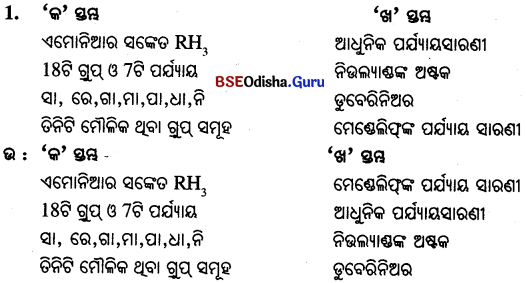
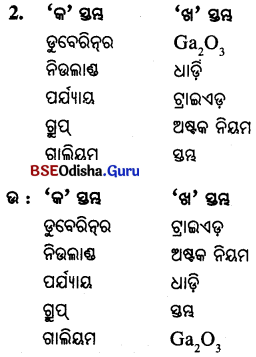
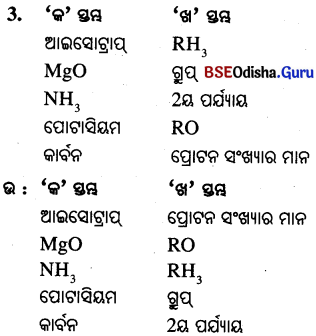
E ଗୋଟିଏ ବାକ୍ୟରେ ଉତ୍ତର ଦିଅ ।
1. ନିଉଲାଣ୍ଡଙ୍କ ଅଷ୍ଟକରେ ଥିବା ସ୍ତମ୍ଭରେ ଡୁବେରିନରଙ୍କ କେଉଁ ଟ୍ରାଇଏଡ୍ ଅଛି ?
ଉ –
Li, Na, K
2. କ୍ୟାଲସିୟମ୍ ସହିତ ରାସାୟନିକ ପ୍ରତିକ୍ରିୟାରେ ସାମଞ୍ଜସ୍ୟ ଥିବା ଦୁଇଟି ମୌଳିକର ନାମ ଲେଖ ।
ଉ–
ମ୍ୟାଗ୍ନେସିୟମ୍, ବେରିୟମ୍, ଷ୍ଟାନ୍ସିୟସ୍
3. ହିଲିୟମ୍ ଓ ନିୟନ କାହିଁକି ଗୋଟିଏ ଗ୍ରୁପ୍ରେ ସ୍ଥାନିତ ହୋଇଛି ?
ଉ—
ହିଲିୟମ୍ ଓ ନିୟନ ଉଭୟ ନିଷ୍କ୍ରିୟ ଗ୍ୟାସ୍ । ଉଭୟ ମୌଳିକର ବହିଃସ୍ଥ କକ୍ଷରେ ପୂର୍ଣ୍ଣ ସଂଖ୍ୟକ ଇଲେକ୍ଟ୍ରନ ଥିବାରୁ ସେମାନଙ୍କୁ ଗୋଟିଏ ଗ୍ରୁପ୍ରେ ସ୍ଥାନିତ କରାଯାଇଛି ।
4. ମେଣ୍ଡେଲିଫ୍ଙ୍କ ପର୍ଯ୍ୟାୟ ସାରଣୀର ନିୟମଟି ଲେଖ ।
ଉ-
ମୌଳିକଗୁଡ଼ିକର ଗୁଣ ସେଗୁଡ଼ିକର ପାରମାଣବିକ ବସ୍ତୁତ୍ଵର ପର୍ଯ୍ୟାୟ ଫଳନ ।
5. ମେଣ୍ଡେଲିଫ୍ ଅକ୍ସିଜେନ ଓ ହାଇଡ୍ରୋଜେନ ସହିତ ମୌଳିକ ସୃଷ୍ଟିକରୁଥିବା ଯୌଗିକର ଧର୍ମପ୍ରତି ଧ୍ୟାନଦେଲେ କାହିଁକି ?
ଉ –
ଅକ୍ସିଜେନ୍ ଓ ହାଇଡ୍ରୋଜେନ ଅଧିକ ପ୍ରତିକ୍ରିୟାଶୀଳ ହୋଇଥିବାରୁ ଏଗୁଡ଼ିକ ଅଧ୍ଵଂକାଂଶ ମୌଳିକ ସହିତ ଯୌଗିକ ସୃଷ୍ଟି କରନ୍ତି ।
6. ମେଣ୍ଡେଲିଫ୍ଙ୍କ ପର୍ଯ୍ୟାୟ ସାରଣୀରେ R ଅକ୍ଷରଟି କ’ଣ ?
ଉ –
R ଅକ୍ଷରଟି ସେହି ଗ୍ରୁପ୍ର ଯେକୌଣସି ମୌଳିକକୁ ସୂଚାଇବା ପାଇଁ ବ୍ୟବହାର କରାଯାଇଛି ।
7. ମେଣ୍ଡେଲିଫ୍ଙ୍କ ବ୍ୟବହାର କରିଥିବା Eka କ’ଣ ?
ଉ –
ମେଣ୍ଡେରିଫ୍ଙ୍କ ପର୍ଯ୍ୟାୟ ସାରଣୀରେ ଥିବା ଖାଲିସ୍ଥାନକୁ ସେହି ଗ୍ରୁପର ପୂର୍ବବର୍ତୀ ମୌଳିକ ନାମ ପୂର୍ବରେ ସଂସ୍କୃତ ଶବ୍ଦ ‘ଏକ’ ଯୋଗ କରି ନାମିତ କରିଥିଲେ । କାରଣ ସେ ଜାଣିଥିଲେ ଯେ ମୌଳିକଟି ଆବିଷ୍କୃତ ହୋଇ ସେହି ସ୍ଥାନ ନେଇପାରିବ ।
8. ମେଣ୍ଡେଲିଫ୍ଙ୍କ ପର୍ଯ୍ୟାୟ ସାରଣୀର ପ୍ରଥମ ତ୍ରୁଟି କ’ଣ ?
ଉ –
ପର୍ଯ୍ୟାୟ ସାରଣୀରେ ହାଇଡ୍ରୋଜେନର ଏକ ନିର୍ଦ୍ଦିଷ୍ଟ ସ୍ଥାନ ସ୍ଥିର କରି ପାରିଲେ ନାହିଁ ।
9. ଆଇସୋଟୋପ୍ କାହାକୁ କହନ୍ତି ?
ଉ-
ପରମାଣୁ କ୍ରମାଙ୍କ ସମାନ କିଛି ବସ୍ତୁତ୍ୱ ସଂଖ୍ୟା ଭିନ୍ନ ହୋଇଥିବା ପରମାଣୁଗୁଡ଼ିକୁ ଆଇସୋଟୋପ୍ କୁହାଯାଏ ।
10. ଆଧୁନିକ ପର୍ଯ୍ୟାୟ ସାରଣୀର ନିୟମଟି କ’ଣ ?
ଭ–
ମୌଳିକଗୁଡ଼ିକର ଗୁଣ, ସେଗୁଡ଼ିକର ପରମାଣୁ କ୍ରମାଙ୍କର ପର୍ଯ୍ୟାୟ ଫଳନ ।
![]()
11. Cl-35 ଓ CI-37 କୁ ଅଲଗା ସ୍ଥାନରେ ରଖାଯିବ ନାହିଁ କାହିଁକି ?
ଉ–
ଉଭୟ ଆଇସୋଟୋପ୍ଗୁଡ଼ିକର ରାସାୟନିକ ଧର୍ମ ଓ ପାରମାଣବିକ କ୍ରମାଙ୍କ ସମାନ ହେତୁ ସେଗୁଡ଼ିକୁ ଅଲଗା ସ୍ଥାନରେ
12. ଆଧୁନିକ ପର୍ଯ୍ୟାୟ ସାରଣୀରେ କୋବାଲ୍ସ ଓ ନିକେଲର ସ୍ଥାନ କିପରି ସ୍ଥିର କରାଯାଇଛି ?
ଉ–
କୋବାଲ୍ଟ ଓ ନିକେଲର ପରମାଣୁ କ୍ରମାଙ୍କ ଯଥାକ୍ରମେ 27 ଓ 28 । ତେଣୁ ଆଧୁନିକ ପର୍ଯ୍ୟାୟ ସାରଣୀରେ କୋବାଲୁ ପରେ ନିକେଲ ସ୍ଥାନିତ ହୋଇଛି ।
13. ଆଧୁନିକ ପର୍ଯ୍ୟାୟ ସାରଣୀରେ ହାଲୋଜେନ ଓ ହିଲିୟମ ମଧ୍ୟରେ ପରମାଣୁ କ୍ରମାଙ୍କ 1.5 ଥିବା କୌଣସି ମୌଳିକ ରହିପାରିବ କି ?
ଉ-
ପରମାଣୁ କ୍ରମାଙ୍କ ମୌଳିକର ନ୍ୟୁକ୍ଲିୟସରେ ଥିବା ପ୍ରୋଟନ ସଂଖ୍ୟାକୁ ସୂଚାଏ । ଯାହାକି ଏକ ଗଣନ ସଂଖ୍ୟା । ତେଣୁ 1.5 ପରମାଣୁ କ୍ରମାଙ୍କ ଥବା ମୌଳିକ ଥିବା ସମ୍ଭବ ନୁହେଁ ।
14. ପର୍ଯ୍ୟାୟ ସାରଣୀରେ ପର୍ଯ୍ୟାୟ କାହାକୁ କହନ୍ତି ?
ଉ –
ପର୍ଯ୍ୟାୟ ସାରଣୀରେ ପ୍ରତ୍ୟେକ ଧାଡିକୁ ପର୍ଯ୍ୟାୟ କହନ୍ତି |
15. ପର୍ଯ୍ୟାୟ ସାରଣୀରେ ଗ୍ରୁପ୍ କାହାକୁ କହନ୍ତି ?
ଉ–
ପର୍ଯ୍ୟାୟ ସାରଣୀରେ ଥିବା ଉପରୁ ତଳକୁ ପ୍ରତ୍ୟେକ ସ୍ତମ୍ଭକୁ ଗ୍ରୁପ୍ କହନ୍ତି ।
16. ମୌଳିକଗୁଡ଼ିକୁ ଏକ ନିର୍ଦ୍ଦିଷ୍ଟ ଗ୍ରୁପ୍ରେ ସଜାଯାଇଛି କିପରି ?
ଉ –
ଯେଉଁ ମୌଳିକଗୁଡ଼ିକର ପରମାଣୁରେ ସମାନ ସଂଖ୍ୟକ ସଂଯୋଜକ ଇଲେକ୍ଟ୍ରମ୍ ଥାଏ, ସେମାନଙ୍କୁ ଗୋଟିଏ ଗ୍ରୁପ୍ରେ ସଜାଯାଇଛି ।
17. ପ୍ରତି ପର୍ଯ୍ୟାୟରେ ମୌଳିକଗୁଡ଼ିକ ମଧ୍ୟରେ କ’ଣ ସମାନତା ଦେଖାଯାଏ ?
ଉ –
ପ୍ରତି ପରମାଣୁର କକ୍ଷସଂଖ୍ୟା, ପର୍ଯ୍ୟାୟ ସଂଖ୍ୟାସହ ସମାନ ।
18. ଯୋଗ୍ଯତା କିପରି ନିରୂପିତ କରାଯାଏ ?
ଉ –
ଗୋଟିଏ ମୌଳିକର ଯୋଗ୍ୟତା ଏହାର ବାହ୍ୟତମ କକ୍ଷରେ ଥିବା ସଂଯୋଜକ ଇଲେକ୍ଟ୍ରନଦ୍ୱାରା ନିରୂପିତ ହୋଇଥାଏ ।
19. ଗୋଟିଏ ପର୍ଯ୍ୟାୟରେ ବାମରୁ ଡାହାଣକୁ ମୌଳିକଗୁଡ଼ିକର ଯୋଗ୍ୟତା କିପରି ପରିବର୍ତ୍ତିତ ହେଉଛି ?
ଉ-
ପ୍ରଥମେ ଯୋଗ୍ୟତା 1ରୁ 4 ପର୍ଯ୍ୟନ୍ତ ବଢ଼େ ଓ ପରେ 4 ରୁ 0 ପର୍ଯ୍ୟନ୍ତ କମିଥାଏ ।
20. ପରମାଣୁର ଆକାର କାହାକୁ କହନ୍ତି ?
ଉ-
ପରମାଣୁର ନ୍ୟୁକ୍ଲିୟସର କେନ୍ଦ୍ରବିନ୍ଦୁ ଓ ସେହି ପରମାଣୁର ବାହ୍ୟତମ କକ୍ଷ ମଧ୍ୟରେ ଥିବା ଦୂରତାକୁ ପରମାଣୁର ଆକାର କହନ୍ତି ।
21. ଆଧୁନିକ ପର୍ଯ୍ୟାୟ ସାରଣୀରେ ପର୍ଯ୍ୟାୟ ଓ ଗ୍ରୁପ୍ରେ ପରମାଣୁର ଆକାର କିପରି ପରିବର୍ତ୍ତନ ହୁଏ ?
ଉ–
ଆଧୁନିକ ପର୍ଯ୍ୟାୟ ସାରଣୀରେ ମୌଳିକଗୁଡ଼ିକର ଆକାର ପର୍ଯ୍ୟାୟର ବାମରୁ ଡାହାଣକୁ କମେ ଓ ଗ୍ରୁପ୍ରେ ଉପରୁ ତଳକୁ ପରମାଣୁର ଆକାର ବୃଦ୍ଧିପାଏ ।
22. ଅର୍ଦ୍ଧଧାତୁ କାହାକୁ କହନ୍ତି ?
ଊ–
ଯେଉଁ ମୌଳିକଗୁଡ଼ିକ ଧାତୁ ଓ ଧାତୁର ଗୁଣ ପ୍ରଦର୍ଶନ କରନ୍ତି ସେହି ମୌଳିକଗୁଡ଼ିକୁ ଅଦ୍ଧଧାତୁ କହନ୍ତି ।
23. ଗ୍ରୁପ୍ରେ ଇଲେକ୍ଟ୍ରନ ଗ୍ରହଣ କରିବା ପ୍ରବୃତ୍ତି କିପରି ବଦଳୁଛି ?
ଉ –
ଗ୍ରୁପ୍ରେ ଉପରୁ ତଳକୁ ମୌଳିକଗୁଡ଼ିକର ଇଲେକ୍ଟ୍ରନ ତ୍ୟାଗ କରିବା ପ୍ରବୃତ୍ତି ବଢ଼େ ।
24. ମେଣ୍ଡେଲିଫ୍ଙ୍କ ପର୍ଯ୍ୟାୟ ସାରଣୀରେ ଗ୍ରୁପ୍ – I ଓ ଗ୍ରୁପ୍ – VIIର ହାଇଡ୍ରାଇଡ୍ RH ସମାନଥିଲେ ମଧ୍ୟ ଭିନ୍ନ ଗ୍ରୁପ୍ରେ କାହିଁକି ରଖାଯାଇଛି ?
ଉ-
ଗ୍ରୁପ୍ – I ଓ VII ରେ ଥିବା ମୌଳିକଗୁଡ଼ିକର ଅକ୍ସାଇଡ୍ର ସାଧାରଣ ସଙ୍କେତ ଯଥାକ୍ରମେ R2O ଓ R2O7 | ଭିନ୍ନ ଭିନ୍ନ ସଙ୍କେତ ଥିବାରୁ ଭିନ୍ନ ଗ୍ରୁପ୍ରେ ସ୍ଥାନିତ ହୋଇଛି ।
25. C, B, Li, O, Be, N ପରମାଣୁର ବ୍ୟାସାର୍ଦ୍ଧର ବୃଦ୍ଧି କ୍ରମରେ ଲେଖ ।
ଉ-
O<N< C < B< Be < Li 26. Al, Si, P, S, Na, Ar, Cl, Mg ପରମାଣୁର କ୍ରମାଙ୍କ ଅଧଃକ୍ରମରେ ସଜାଅ । ଭ- Ar > Cl > S > P > Si > Al > Mg > Na
27. କେଉଁ ଦୁଇଟି ତଥ୍ୟକୁ ଆଧାର କରି ମେଣ୍ଡେଲିଫ୍ ମୌଳିକଗୁଡ଼ିକୁ ଶ୍ରେଣୀ ବିଭାଗ କରିଥିଲେ ?
ଉ-
- ପରମାଣବିକ ବସ୍ତୁତ୍ଵର ବର୍ଦ୍ଧିତ କ୍ରମ
- ସମାନଧର୍ମୀ ମୌଳିକ ଯଥା ସମାନ ହାଇଡ୍ରାଇଡ୍ ଓ ଅକ୍ସାଇଡ୍ ଧର୍ମ ଥିବା ମୌଳିକ ।
28. ଗୋଟିଏ ମୌଳିକର ପରମାଣୁ କ୍ରମାଙ୍କ 13 । ଏହା ଆଧୁନିକ ପର୍ଯ୍ୟାୟର କେଉଁ ପର୍ଯ୍ୟାୟ ଓ କେଉଁ ଗ୍ରୁପ୍ରେ ରହିବ ?
ଉ-
ମୌଳିକର ଇଲେକ୍ଟ୍ରନ ସଂରଚନା – 2, 8, 3 ଏହା ତୃତୀୟ ପର୍ଯ୍ୟାୟ ଓ ତୃତୀୟ ଗ୍ରୁପ୍ରେ ରହିବ ।
29. ମେଣ୍ଡେଲିଫ୍ଙ୍କ ପର୍ଯ୍ୟାୟ ସାରଣୀରେ କେତୋଟି ଗ୍ରୁପ୍ ଓ କେତୋଟି ପର୍ଯ୍ୟାୟ ଅଛି ?
ଉ –
ମେଣ୍ଡେଲିଫ୍ଙ୍କ ପର୍ଯ୍ୟାୟ ସାରଣୀରେ ୫ଟି ଗ୍ରୁପ୍ ଓ 7ଟି ପର୍ଯ୍ୟାୟ ଅଛି ।
30. ଆଧୁନିକ ପର୍ଯ୍ୟାୟ ସାରଣୀର ପ୍ରଥମ ଦୁଇଟି ପର୍ଯ୍ୟାୟରେ ଥିବା ଅଧାତୁଗୁଡ଼ିକର ନାମ ଲେଖ ।
ଉ-
ହାଇଡ୍ରୋଜେନ୍, ହିଲିୟମ୍, ବୋରନ୍, କାର୍ବନ୍, ନାଇଟ୍ରୋଜେନ୍, ଅକ୍ସିଜେନ୍, ଫ୍ଲୋରିନ୍, ନିୟନ୍ ।
![]()
31. କେଉଁ ମୌଳିକର ଦ୍ବିତୀୟ କକ୍ଷରେ ଥିବା ଇଲେକ୍ଟ୍ରନ୍ ସଂଖ୍ୟା ପ୍ରଥମ କକ୍ଷରେ ଥିବା ଇଲେକ୍ଟ୍ରନ୍ ସଂଖ୍ୟାର ଦୁଇଗୁଣ ଅଟେ ?
ଉ –
କାର୍ବନ୍ ମୌଳିକର ଦ୍ଵିତୀୟ କକ୍ଷରେ ଥିବା ଇଲେକ୍ଟ୍ରନ୍ ସଂଖ୍ୟା ପ୍ରଥମ କକ୍ଷରେ ଥିବା ଇଲେକ୍ଟ୍ରନ୍ ସଂଖ୍ୟାର ଦୁଇଗୁଣ ଅଟେ ।
32. ମେଣ୍ଡେଲିଫ୍ଙ୍କ ପର୍ଯ୍ୟାୟ ସାରଣୀର ମୌଳିକଗୁଡ଼ିକ କେଉଁ କ୍ରମରେ ସଜାଯାଇଛି ?
ଉ-
ମେଣ୍ଡେଲିଫ୍ଙ୍କ ପର୍ଯ୍ୟାୟ ସାରଣୀର ମୌଳିକଗୁଡ଼ିକ ପାରମାଣବିକ ବସ୍ତୁତ୍ଵର ବର୍ଦ୍ଧିତ କ୍ରମ କ୍ରମରେ ସଜାଯାଇଛି ।
33. ଉତ୍ପ୍ରେରକ ପ୍ଲାଟିନମ୍ ପାଇଁ କେଉଁ ବୈଜ୍ଞାନିକ ଗବେଷଣା କରିଥିଲେ ?
ଉ-
ଉତ୍ପ୍ରେରକ ପ୍ଲାଟିନମ୍ ପାଇଁ ବୈଜ୍ଞାନିକ ଡୁବେରିନର୍ ଗବେଷଣା କରିଥିଲେ ।
34. ‘‘ଗୋଟିଏ ମୌଳିକର ପରମାଣୁ କ୍ରମାଙ୍କ ଏହାର ପାରମାଣବିକ ବସ୍ତୁତ୍ୱଠାରୁ ଅଧିକ ପ୍ରାଥମିକ ଧର୍ମ’’ ବୈଜ୍ଞାନିକ ମୋସ୍ଲି ଦର୍ଶାଇଥିଲେ ।
ଉ-
‘‘ଗୋଟିଏ ମୌଳିକର ପରମାଣୁ କ୍ରମାଙ୍କ ଏହାର ପାରମାଣବିକ ବସ୍ତୁତ୍ୱଠାରୁ ଅଧ୍ବକ ପ୍ରାଥମିକ ଧର୍ମ’’ ବୈଜ୍ଞାନିକ ମୋସ୍ଲି ଦର୍ଶାଇଥିଲେ ।
35. ଆଧୁନିକ ପର୍ଯ୍ୟାୟ ସାରଣୀରେ ଥିବା ମୌଳିକ କେଉଁ କ୍ରମରେ ସଜାଯାଇଛି ?
ଉ-
ଆଧୁନିକ ପର୍ଯ୍ୟାୟ ସାରଣୀରେ ଥିବା ମୌଳିକ ସେମାନଙ୍କର ପରମାଣୁ କ୍ରମାଙ୍କ ବର୍ଦ୍ଧିତ କ୍ରମରେ ସଜାଯାଇଛି ।
F ପ୍ରଥମଯୋଡ଼ିର ସମ୍ପର୍କକୁ ଲକ୍ଷ୍ୟ କରି ଦ୍ବିତୀୟ ଯୋଡ଼ିର ଶୂନ୍ୟସ୍ଥାନ ପୂରଣ କର ।
1. Na : ଗ୍ରୁପ୍ – 1 :: N : ……………. |
2. Ca : 40.1 :: Sr : ………….. |
3. Ca + Ba: Sr :: Cl + I: …………… |
4. ଡୁବେରିନର୍ : ଟ୍ରାଇଏଡ୍ ସମୂହ :: ନିଉଲାଣ୍ଡ : …………….. |
5. ନିଉଲାଣ୍ଡ : 57 ମୌଳିକ :: ମେଣ୍ଡେଲିଫ : ……………………… |
6. ଡୁବେରିନର :1817 :: ନିଡ୍ଲାଣ୍ଡ : ………………. |
7. ପାରମାଣବିକ ବସ୍ତୁତ୍ଵ : ମେଣ୍ଡେଲିଫ୍ :: ପରମାଣୁ କ୍ରମାଙ୍କ : …………………… |
8. ସ୍ତମ୍ଭ : ଗ୍ରୁପ୍ :: ଧାଡ଼ି : ………………… |
9. ଏକ ବୋରନ୍ : ସ୍କାଣ୍ଡିୟମ୍ : ଏକ-ଏଲୁମିନିୟମ୍ :: ………………. |
10. ଗାଲିୟମ୍ ଅକ୍ସାଇଡ୍ : Ga2O3 :: ଗାଲିୟମ୍ କ୍ଲୋରାଇଡ୍ : …………………… |
11. He : ନୋବଲ ଗ୍ୟାସ୍ :: Ar : …………….. |
12. ହାଲୋଜେନ : ଦୁଇ ପରମାଣୁ :: ହାଇଡ୍ରୋଜେନ୍ : ……………….. |
13. Na : କ୍ଷାରଧାତୁ :: K : …………….. |
14. Mg : 2.8.2 :: Si : ………………. |
15. O : 6 ଇଲେକ୍ଟ୍ରଟ :: S : ………….. |
16. Na: 3 :: K: ………….. |
17. Be : L କକ୍ଷ :: Mg : …………… |
18. B : ଉପଧାତୁ :: Si : ……….. |
19. Li : ଦ୍ୱିତୀୟ ପର୍ଯ୍ୟାୟ :: K : ……………. |
20. C : ଗ୍ରୁପ୍ 14 :: Cl : …………….. |
21. 2ୟ ପର୍ଯ୍ୟାୟ : 8 :: 4 ର୍ଥ ପର୍ଯ୍ୟାୟ : ………………… |
22. NH3 : RH3 :: MgO : ……………… |
23. Li : 152 :: C : ……………. |
24. ପର୍ଯ୍ୟାୟ : : ପରମାଣୁ ଆକାର ହ୍ରାସ :: ଗ୍ରୁପ୍ : ………………….. |
25. ଧାତୁ : ପର୍ଯ୍ୟାୟ ସାରଣୀ ବାମ :: ଅଧାତୁ : ………….. |
26. ଧାତୁ : ବିଦ୍ୟୁତ୍ ଯୁକ୍ତାତ୍ମକ :: ଅଧାତୁ : ……………………. |
27. ଧାତବ ଅକ୍ସାଇଡ୍ : କ୍ଷାରୀୟ :: ଅଧାତବ ଅକ୍ସାଇଡ୍ : …………………….. |
28. ଯୋଗ୍ୟତା ବୃଦ୍ଧି : ଏକ ନିର୍ଦ୍ଦିଷ୍ଟ ପର୍ଯ୍ୟାୟ :: ଯୋଗ୍ୟତା ସମାନ : ……………………… |
29. 2ୟ ଓ 3ୟ ପର୍ଯ୍ୟାୟ : 8ଟି ମୌଳିକ :: 4ର୍ଥ ଓ 5ମ ପର୍ଯ୍ୟାୟ : ………………..|
30. Na : ଗ୍ରୁପ୍-1 :: C : ……………… |
31. Mg : 2, 8, 2 :: Si : …………… |
32. Ca: 20 :: Al: ………….. |
33. Li : 152 :: Na : ……………… |
34. କପର୍ର ପରମାଣୁ କ୍ରମାଙ୍କ : 20 :: ଅକ୍ସିଜେନ୍ର ପରମାଣୁ କ୍ରମାଙ୍କ : ………………….. |
35. Na : ତୃତୀୟ ପର୍ଯ୍ୟାୟ :: F: ……………. |
36. O : ଗ୍ରୁପ୍ 16 :: Cl : ………….. |
37. NH3 : RH3 :: MgO : ……………… |
38. Hର ଯୌଗିକ : H2S :: Kର ଯୌଗିକ : …………………. |
39. Mg : ପର୍ଯ୍ୟାୟ ସାରଣୀର ବାମପାର୍ଶ୍ଵ :: CI : ……………… |
40. ସିଲିକନ୍ : ଉପଧାତୁ :: ସୋଡ଼ିୟମ୍ : …………………. |
Answer:
1.7
2. 87.6
3. Br
4. ଅଷ୍ଟକ ନିୟମ
5. 63
6. 1866
7. ମୋସ୍ଲେ
8. ପର୍ଯ୍ୟାୟ
9. ଗାଲିୟମ୍
10. GaCl3
11. ନୋବଲ ଗ୍ୟାସ୍
12. ଦୁଇ ପରମାଣୁ
13. କ୍ଷାରଧାତୁ
14. 2, 8, 4
15. 6 ଇଲେକ୍ଟ୍ରନ
16. 4
17. M
18. ଉପଧାତୁ
19. 4ର୍ଥ
20. ଖୁସ୍ – 17
21. 18
22. RO
23.77
24. ପରମାଣୁ ଆକାର ବୃଦ୍ଧି
25. ପର୍ଯ୍ୟାୟ ସାରଣୀ ଡାହାଣ
26. ବିଦ୍ୟୁତ୍ ବିଯୁକ୍ତାତ୍ମକ
27. ଅମ୍ଳୀୟ
28. ଏକ ନିର୍ଦ୍ଦିଷ୍ଟ ଗ୍ରୁପ୍
29. 18ଟି ମୌଳିକ
30. ଖୁସ୍ – 14
31. 2,8,4
32. 13
33. 186
34. O
35. ଦ୍ୱିତୀୟ ପର୍ଯ୍ୟାୟ
36. ଖୁସ୍ 17
37. RO
38. K2O
39. ପର୍ଯ୍ୟାୟ ସାରଣୀର ଦକ୍ଷିଣ ପାର୍ଶ୍ଵ
40. ଧାତୁ
![]()
SUBJECTIVE TYPE QUESTIONS WITH ANSWERS
1. ଗ୍ରୁପ୍ – 1 ରେ ଥିବା ତିନୋଟି ମୌଳିକର ନାମ ଓ ଇଲେକ୍ଟ୍ରନ୍ ସଂରଚନା ଲେଖ । ଏମାନଙ୍କ ମଧ୍ୟରେ ଥିବା ତିନୋଟି ସାମଞ୍ଜସ୍ୟ ଓ ଦୁଇଟି ପାର୍ଥକ୍ୟ ଲେଖ ।
ଉ –
(i) ଗ୍ରୁପ୍-1ରେ ଥିବା ତିନୋଟି ମୌଳିକ ହେଉଛି ଲିଥ୍ୟମ୍, ସୋଡ଼ିୟମ୍, ପୋଟାସିୟମ୍ । ଏମାନଙ୍କର ପରମାଣୁ କ୍ରମାଙ୍କ ଯଥାକ୍ରମେ 3, 11, 19 |
(ii)

ସାମଞ୍ଜସ୍ୟ :
- ମୌଳିକଗୁଡ଼ିକର ବାହ୍ୟତମ କକ୍ଷରେ ସମାନ ସଂଖ୍ୟକ ଇଲେକ୍ଟ୍ରନ୍ ଅଛି ।
- ପ୍ରତ୍ୟେକର ଯୋଗ୍ଯତା-1
- ସେମାନେ ଗୋଟିଏ ଗ୍ରୁପରେ ଥିବାରୁ ସେମାନଙ୍କର ରାସାୟନିକ ଧର୍ମ ସମାନ ।
ଯଥା :
ଲିଥୁମ୍ ଅକ୍ସାଇଡ୍ Li20
ପୋଡ଼ିୟମ୍ ଅକ୍ସାଇଡ୍ Na2O
ପୋଟାସିୟମ ଅକ୍ସାଇଡ୍ K2O
ପାର୍ଥକ୍ୟ :
(i) Li, Na,K ର ପରମାଣୁର ଆକାର ଭିନ୍ନ ଭିନ୍ନ ।

Li < Na < K
2. ମୌଳିକଗୁଡ଼ିକର ସଂଯୋଜକ ଇଲେକ୍ଟ୍ରନ୍ କିପରି ଗୋଟିଏ ଗ୍ରୁପ୍ରେ ସମାନ । ତିନୋଟି ଉଦାହରଣ ଦେଇ ବୁଝାଅ । ସଂଯୋଜକ ଇଲେକ୍ଟ୍ରରୁ ଗ୍ରୁପ୍ କିପରି ନିରୂପଣ କରାଯାଏ ବୁଝାଅ ।
ଉ –
ଆଧୁନିକ ପର୍ଯ୍ୟାୟ ସାରଣୀରେ ଥିବା ଏକ ସମସ୍ତ ମୌଳିକଗୁଡ଼ିକର ସମାନ ସଂଖ୍ୟକ ଇଲେକ୍ଟ୍ରିନ୍ ଥାଏ ।
ଉଦାହରଣ : ଗ୍ରୁପ୍ -1 ମୌଳିକ
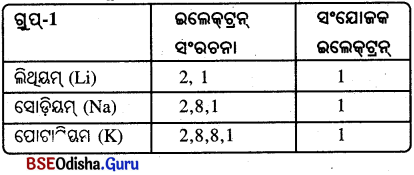
ଗ୍ରୁପ୍-1 ରେ ଥିବା ମୌଳିକଗୁଡ଼ିକରେ ବାହ୍ୟତମ କକ୍ଷରେ 1ଟି ଲେଖାଏଁ ଇଲେକ୍ଟ୍ରନ୍ ଅଛି ।

ଗ୍ରୁପ୍-17ରେ ଥିବା ମୌଳିକଗୁଡ଼ିକରେ ବାହ୍ୟତମ କକ୍ଷରେ 7ଟି ଲେଖାଏଁ ଇଲେକ୍ଟ୍ରନ୍ ଅଛି ।
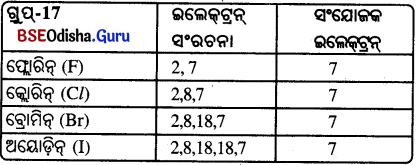
ସଂଯୋଜକ ଇଲେକ୍ଟ୍ରନ୍ ସଂଖ୍ୟା 1 ଗ୍ରୁପ୍-1ରେ ମୌଳିକଗୁଡ଼ିକ ରହିବେ ।
ସଂଯୋଜକ ଇଲେକ୍ଟ୍ରନ୍ ସଂଖ୍ୟା 2 ଗ୍ରୁପ୍-2ରେ ମୌଳିକଗୁଡ଼ିକ ରହିବେ।
ସଂଯୋଜକ ଇଲେକ୍ଟ୍ରନ୍ ସଂଖ୍ୟା 3 ହେଲେ ମୌଳିକଗୁଡ଼ିକ 3 + 10 = 13 ଗ୍ରୁପରେ ର ହିବେ ।
ସେହିପରି ସଂଯୋଜକ ଇଲେକ୍ଟ୍ରନ୍ ସଂଖ୍ୟା 7 ହେଲେ ମୌଳିକଗୁଡ଼ିକ 10 + 7= 17 ତମ ଗ୍ରୁପ୍ରେ ରହିବେ ।
3. ମେଣ୍ଡେଲିଫ୍ଙ୍କ ପର୍ଯ୍ୟାୟ ସାରଣୀର ନିୟମଟି ଲେଖ୍ ଗ୍ରୁପ୍ ଓ ପର୍ଯ୍ୟାୟ କ’ଣ ବୁଝାଅ ? ମେଣ୍ଡେଲିଫ୍ଙ୍କ ଶ୍ରେଣୀକରଣର ଚୁଟି ଉଦାହରଣ ସହ ବର୍ଣ୍ଣନା କର ।
ଉ–
ମେଣ୍ଡେଲିଫ୍ଙ୍କ ପର୍ଯ୍ୟାୟ ନିୟମ – ‘‘ମୌଳିକଗୁଡ଼ିକର ଗୁଣ ସେଗୁଡ଼ିକର ପାରମାଣବିକ ବସ୍ତୁତ୍ଵର ପର୍ଯ୍ୟାୟ ଫଳନ’’ । ଗ୍ରୁପ୍ ଓ ପର୍ଯ୍ୟାୟ – ମେଣ୍ଡେଲିଫ୍ଙ୍କ ପର୍ଯ୍ୟାୟ ସାରଣୀରେ ଥିବା ସ୍ତମ୍ଭକୁ ଗ୍ରୁପ୍ ଓ ଧାଡ଼ିକୁ ପର୍ଯ୍ୟାୟ କୁହାଯାଏ ।
ମେଣ୍ଡେଲିଫ୍ଙ୍କ ଶ୍ରେଣୀକରଣର ତ୍ରୁଟି :
- ହାଇଡ୍ରୋଜେନ୍କୁ ନିର୍ଦ୍ଦିଷ୍ଟ ସ୍ଥାନ ଦିଆଯାଇ ନାହିଁ । ହାଇଡ୍ରୋଜେନର ଅବସ୍ଥିତି ବିବାଦୀୟ, କାରଣ କ୍ଷାରୀୟ ଧାତୁର ଗୁଣ ଓ ହାଲୋଜେନ୍ ଭଳି ଅଧାତୁର ଗୁଣ ପ୍ରଦର୍ଶନ ହେତୁ ପର୍ଯ୍ୟାୟ ସାରଣୀରେ ଏହାକୁ ଏକ ନିର୍ଦ୍ଦିଷ୍ଟ ସ୍ଥାନ ଦିଆଯାଇପାରିବ ନାହିଁ ।
- ଗୋଟିଏ ମୌଳିକର ସମସ୍ଥାନିକମାନଙ୍କର ଭିନ୍ନ ଭିନ୍ନ ବସ୍ତୁତ୍ଵ ବିଶିଷ୍ଟ ହେତୁ ସେମାନଙ୍କୁ ଗୋଟିଏ ସ୍ଥାନରେ ରଖୁ ସମ୍ଭବ ହେଲାନାହିଁ ।
- ଲୁହା, କୋବାଲଟ୍, ନିକେଲ ପ୍ରଭୃତି ମୌଳିକମାନଙ୍କର ପାରମାଣବିକ ବସ୍ତୁତ୍ଵ ଅଲଗା ହେଲେ ମଧ୍ୟ ସେମାନଙ୍କ ପାଇଁ ଗୋଟିଏ ସ୍ଥାନ ରଖାଯାଇଥିଲା।
- ରାସାୟନିକ ଗୁଣର ସାମଞ୍ଜସ୍ୟ ଥିବା ମୌଳିକଗୁଡ଼ିକୁ ଭିନ୍ନ ଭିନ୍ନ ଗ୍ରୁପ୍ରେ ରଖୁଥିଲେ ।
ଉଦାହରଣସ୍ୱରୂପ, ତମ୍ବା (Cu), ରୁପା (Ag) ଏବଂ ସୁନା (Au) କ୍ଷାରୀୟ ଧାତୁଗୁଡ଼ିକୁ ଗୋଟିଏ ଗ୍ରୁପରେ - ଟ୍ରାନ୍ସନ ମୌଳିକଗୁଡ଼ିକ ପାଇଁ ସ୍ଥାନ ତ୍ରୁଟିପୂର୍ଣ୍ଣ ଥିଲା ।
- ଲାନ୍ଥାନାଇଡ୍ ଏବଂ ଆକ୍ଟିନାଇଡ୍ ଶ୍ରେଣୀୟ ମୌଳିକକୁ ଉପଯୁକ୍ତ ସ୍ଥାନ ଦିଆଯାଇ ନଥିଲା ।
![]()
ସଂକ୍ଷିପ୍ତ ଭତ୍ତରମୂଳକ ପ୍ରଶ୍ନୋତ୍ତର
1. ମେଣ୍ଡେଲିଫ୍ଙ୍କ ପର୍ଯ୍ୟାୟ ସାରଣୀର ସଫଳତା ଉଦାହରଣ ଦେଇ ବୁଝାଅ ।
ଉ –
(i) ମେଣ୍ଡେଲିଫ୍ ପର୍ଯ୍ୟାୟ ସାରଣୀ ପ୍ରସ୍ତୁତ କଲାବେଳେ କେତେକ ସ୍ଥଳରେ ସାମାନ୍ୟ ଅଧ୍ଵ ପାରମାଣବିକ ବସ୍ତୁତ୍ଵର ମୌଳିକକୁ ଏହାଠାରୁ କମ୍ ପାରମାଣବିକ ବସ୍ତୁତ୍ଵର ମୌଳିକ ପୂର୍ବରୁ ସ୍ଥାନିତ କରିଥିଲେ । ଅନୁକ୍ରମର ଓଲଟ ପାଲଟ କରାଯିବା ଫଳରେ ସମଧର୍ମୀ ମୌଳିକଗୁଡ଼ିକ ଏକତ୍ର ଶ୍ରେଣୀବଦ୍ଧ ହୋଇପାରିଲା ।
ଉଦାହରଣ :
୨୫.୨ ପାରମାଣବିକ ବସ୍ତୁତ୍ଵର Co, 58.7 ପାରମାଣବିକ ବସ୍ତୁତ୍ଵର Ni ପୂର୍ବରୁ ରହିଛି ।
(ii) ମେଣ୍ଡେଲିଫ 3ଟି ମୌଳିକକୁ ସଜାଇଲାବେଳେ ପର୍ଯ୍ୟାୟ ସାରଣୀରେ ଆବିଷ୍କୃତ ହୋଇନଥିବା ମୌଳିକଗୁଡ଼ିକ ପାଇଁ କେତେକ ଖାଲିସ୍ଥାନ ରଖଥିଲେ । ଏହିସବୁ ଖାଲିସ୍ଥାନ ନୂଆ ମୌଳିକ ଆବିଷ୍କୃତ ହେଲେ ପୂରଣ ହୋଇପାରିବ ଏବଂ ଏଥିରୁ ଜଣାଯାଏ ଯେ ସେ ମୌଳିକଗୁଡ଼ିକର ଅବସ୍ଥିତି ଓ ଧର୍ମ ନିରୂପଣ କରିଥିଲେ । ସେହି ମୌଳିକଗୁଡ଼ିକୁ ସେହି ଗ୍ରୁପର ପୂର୍ବବର୍ତୀ ମୌଳିକର ନାମ ପୂର୍ବରୁ ସଂସ୍କୃତ ଶବ୍ଦ ‘ଏକ’ (Eka) ଯୋଗକରି ନାମିତ କରିଥିଲେ ।
ଉଦାହରଣ :
ପରବର୍ତ୍ତୀ ସମୟରେ ଆବିଷ୍କୃତ ହୋଇଥିବା ସ୍କାଣ୍ଡିୟମ୍, ଗାଲିୟମ୍, ଜର୍ମାନିୟମ୍ର ଧର୍ମ ଯଥାକ୍ରମେ ଏକ-ବୋରନ୍, ଏକ-ଏଲୁମିନିୟମ ଓ ଏକ-ସିଲିକନ୍ ଧର୍ମ ସହିତ ସମାନ ।
(iii) ହିଲିୟମ୍, ନିୟନ, ଆର୍ଗନ୍ ଭଳି ନୋବଲ୍ ଗ୍ୟାସ୍ଗୁଡ଼ିକ ବହୁବିଳମ୍ବରେ ଆବିଷ୍କୃତ ହେଲା । ପର୍ଯ୍ୟାୟ ସାରଣୀର କୌଣସି ପରିବର୍ତ୍ତନ ନ କରି ଗ୍ୟାସ୍ଗୁଡ଼ିକ ଆବିଷ୍କୃତ ହେଲାପରେ ଏକ ନୂଆ ଗ୍ରୁପରେ ସ୍ଥାନିତ କରାଯାଇ ପାରିଲା ।
2. ମୌଳକଗୁଡ଼ିକର ପରମାଣୁର ଆକାର, ଧାତବ-ଅଧାତବ ଗୁଣ, ଇଲେକ୍ଟ୍ରନ୍ ତ୍ୟାଗ କରିବା ପ୍ରକୃତି, ବିଦ୍ୟୁତ୍ ଯୁକ୍ତାତ୍ମକ ଗୁଣ କିପରି ପରସ୍ପର ସହ ସମ୍ପର୍କିତ ଆଲୋଚନା କର ।
ଉ –
- ପରମାଣୁର ଆକାର ବୃଦ୍ଧି ସହ ଇଲେକ୍ଟ୍ରନ୍ ତ୍ୟାଗ କରିବା ପ୍ରବୃତ୍ତି ବଢ଼େ ।
- ଇଲେକ୍ଟ୍ରନ୍ ତ୍ୟାଗ କରିବା ପ୍ରବୃତ୍ତି ବୃଦ୍ଧି ସହ ଧାତବ ପ୍ରକୃତି ବଢ଼େ ଓ ଅଧାତବ ଗୁଣ କମେ ।
- ମୌଳିକମାନଙ୍କର ଇଲେକ୍ଟ୍ରନ୍ ତ୍ୟାଗ କରିବା ପ୍ରକୃତି ବୃଦ୍ଧି ସହ ମୌଳିକମାନଙ୍କର ବିଦ୍ୟୁତ୍ ଯୁକ୍ତାତ୍ମକ ଗୁଣ ବୃଦ୍ଧି ଘଟେ ।
3. ଆଧୁନିକ ପର୍ଯ୍ୟାୟ ସାରଣୀରେ ପର୍ଯ୍ୟାୟଗୁଡ଼ିକରେ ମୌଳିକମାନଙ୍କର ଯୋଗ୍ୟତା, ପରମାଣୁର ଆକାର ଏବଂ ଧାତବୀୟ ପ୍ରକୃତି କିପରି କ୍ରମାନ୍ୱୟରେ ବଦଳେ ଆଲୋଚନା କର ।
ଉ
(i) ଯୋଗ୍ୟତା : ଗୋଟିଏ ମୌଳିକ ଯୋଗ୍ୟତା ତା’ର ବାହ୍ୟତମ କକ୍ଷରେ ଥିବା ସଂଯୋଜକ ଇଲେକ୍ଟ୍ରନ୍ ଦ୍ଵାରା ନିରୂପିତ ହୋଇଥାଏ ।
(ii) ପରମାଣୁର ଆକାର : ପରମାଣୁର ଆକାର ତା’ର ବ୍ୟାସାର୍ଦ୍ଧ ଉପରେ ନିର୍ଭର କରେ । ଗୋଟିଏ ପର୍ଯ୍ୟାୟର ବାମରୁ ଡାହାଣକୁ ଗଲେ ପରମାଣୁର ଆକାର କମିଥାଏ । ଦ୍ୱିତୀୟ ପର୍ଯ୍ୟାୟରେ ବାମରୁ ଡାହାଣକୁ ରହିଥିବା କେତୋଟି ମୌଳିକର ପରମାଣୁ ବ୍ୟାସାର୍ଦ୍ଧରୁ ଏହା ଜଣାଯାଏ ।

(iii) ଧାତବୀୟ ପ୍ରକୃତି : ପର୍ଯ୍ୟାୟ ସାରଣୀର ବାମରୁ ଡାହାଣକୁ ଧାତବୀୟ ପ୍ରକୃତି ହ୍ରାସ ପାଏ ଓ ଅଧାତବ ପ୍ରକୃତି ବଢ଼ିଥାଏ । କେତେକ ମୌଳିକ ଉଭୟ ଧାତୁ ଅଧାତୁର ଗୁଣ ପ୍ରଦର୍ଶନ କରିଥା’ନ୍ତି । B, Si, P ଇତ୍ୟାଦିକୁ ଉପଧାତୁ କହନ୍ତି ।
4. ଆଧୁନିକ ପର୍ଯ୍ୟାୟ ସାରଣୀରେ ପ୍ରତ୍ୟେକ ଗ୍ରୁପ୍ ଓ ପର୍ଯ୍ୟାୟରେ ପରମାଣୁର ଆକାର କିପରି ବଦଳେ ଉଦାହରଣ ସହ ବୁଝାଅ ।
ଉ–
(i) ପରମାଣୁର ଆକାର ଏକ ପରମାଣୁର ନ୍ୟୁକ୍ଲିୟସ୍ର କେନ୍ଦ୍ର ବିନ୍ଦୁ ଓ ସେହି ପରମାଣୁର ବାହ୍ୟତମ କକ୍ଷ ମଧ୍ୟରେ ଦୂରତାକୁ ପରମାଣୁର ଆକାର କୁହାଯାଏ ।
(ii) ଗୋଟିଏ ଗ୍ରୁପ୍ର ଉପରୁ ତଳ ଆଡ଼କୁ ପରମାଣୁର ଆକାର ବୃଦ୍ଧିପାଏ କାରଣ ଗ୍ରୁପ୍ ଉପରୁ ତଳକୁ ଗଲେ ମୌଳିକଗୁଡ଼ିକର ପରମାଣୁରେ ଗୋଟିଏ କରି ନୂଆ କକ୍ଷ ଯୋଗହୋଇ ଚାଲେ ଫଳରେ ବାହ୍ୟତମ କକ୍ଷ ଓ ନ୍ୟୁକ୍ଲିୟସ୍ ମଧ୍ୟରେ ଦୂରତା ବୃଦ୍ଧିପାଏ ।
ଉଦାହରଣ :

(iii) Liର ଦୁଇଟି କକ୍ଷ ଥିବାବେଳେ Na ର 3ଟି କକ୍ଷ ଅଛି ତେଣୁ ସୋଡ଼ିୟମ୍ ପରମାଣୁର ଆକାର Liର ଆକାରଠାରୁ ବଡ଼ । ସେହିପରି Kର ପରମାଣୁର ଆକାର Naର ପରମାଣୁର ଆକାରଠାରୁ ବଡ଼ ।
ପ୍ରତ୍ୟେକ ପର୍ଯ୍ୟାୟରେ ପରମାଣୁର ଆକାର :
(i) ପ୍ରତି ପର୍ଯ୍ୟାୟରେ ବାମରୁ ଡାହାଣକୁ ପରମାଣୁର ଆକାର ହ୍ରାସ ପାଏ ।
ଉଦାହରଣ :

ଉପରୋକ୍ତ ଉଦାହରଣରୁ Be ପରମାଣୁର ଆକାର Li ପରମାଣୁର ଆକାରଠାରୁ କ୍ଷୁଦ୍ରତର । କାରଣ ବାମରୁ ଡାହାଣକୁ ପରମାଣୁରେ ପ୍ରୋଟନ ଓ ଇଲେକ୍ଟ୍ରନ୍ ସଂଖ୍ୟା ବୃଦ୍ଧି ପାଏ । ଗୋଟିଏ ପର୍ଯ୍ୟାୟର ମୌଳିକ ଗୁଡ଼ିକର ପରମାଣୁରେ ସମାନ ସଂଖ୍ୟକ କକ୍ଷ ଥାଏ ନ୍ୟୁକ୍ଲିୟସର ମୋଟ ଯୁକ୍ତଚାର୍ଜ ବଢ଼ି ଚାଲେ । ନ୍ୟୁକ୍ଲିୟସର ଏହି ବର୍ଷିତ ଯୁକ୍ତଚାର୍ଜ ଇଲେକ୍ଟ୍ରନ୍ ଥିବା କକ୍ଷଗୁଡ଼ିକୁ ନିଜ ଆଡ଼କୁ ଟାଣିବାରେ ସହାୟକ ହୋଇଥାଏ ଏବଂ ଇଲେକ୍ଟ୍ରଗୁଡ଼ିକ ନ୍ୟୁକ୍ଲିୟସ୍ ନିକଟତର ହୋଇଥା’ନ୍ତି ଫଳରେ ପରମାଣୁର ଆକାର ହ୍ରାସ ପାଏ ।
5. ପର୍ଯ୍ୟାୟ ସାରଣୀରେ 20 ପରମାଣୁ କ୍ରମାଙ୍କ ବିଶିଷ୍ଟ ମୌଳିକର ପ୍ରକୃତି ସମ୍ବନ୍ଧରେ କି ସୂଚନା ମିଳେ ?
ଊ–
- ମୌଳିକର ପରମାଣୁ କ୍ରମାଙ୍କ
ଇଲେକଟ୍ରନ ସଂରଚନା K(2), L(8), M(8), N(2)
ମୌଳକର ନାମ – କ୍ୟାଲସିୟମ୍ । - 4 ଗୋଟି କକ୍ଷ (K, L, M, N) ଥିବାରୁ ଏହା ଚତୁର୍ଥ ପର୍ଯ୍ୟାୟରେ ଅବସ୍ଥିତ ।
- ବହିଃସ୍ଥ କକ୍ଷରେ 2ଟି ଇଲେକ୍ଟ୍ରନ୍ ଥିବାରୁ ଏହା ଗ୍ରୁପ୍ 2ରେ ଅବସ୍ଥିତ ।
- ପର୍ଯ୍ୟାୟ ସାରଣୀରେ ଗ୍ରୁପ୍ 1 ଓ ଗ୍ରୁପ୍ 2ରେ ଥିବା ମୌଳିକ ଧାତବ । ତେଣୁ କ୍ୟାଲସିୟମ୍ ଏକ ଧାତବ ମୌଳିକ ।
- ଏହାର ଯୋଗ୍ୟତା 2 ।
- ଏହି ଗ୍ରୁପ୍ର Mg ତଳକୁ ଓ ଚତୁର୍ଥ ପର୍ଯ୍ୟାୟରେ ପୋଟାସିୟମ୍ର ଡାହାଣରେ ଅବସ୍ଥିତ । ତେଣୁ ଧାତବୀୟ ଗୁଣ ମ୍ୟାଗ୍ନେସିୟମ୍ଠାରୁ ଅଧ୍ଵ ।
6. ପର୍ଯ୍ୟାୟରେ ମୌଳିକଗୁଡ଼ିକର ବାମରୁ ଡାହାଣକୁ ଧାତବ ପ୍ରକୃତି କିପରି ହ୍ରାସ ପାଏ ଏବଂ ଗ୍ରୁପ୍ରେ ଉପରୁ ତଳକୁ ଧାତବ ଗୁଣ କିପରି ବୃଦ୍ଧିପାଏ ଦର୍ଶାଅ ।
ଉ-
ପର୍ଯ୍ୟାୟରେ ଘଟୁଥିବା ପରିବର୍ତ୍ତନ :
- ପର୍ଯ୍ୟାୟରେ ବାମରୁ ଡାହାଣକୁ ପରମାଣୁ କ୍ରମାଙ୍କ ବଢ଼େ; କିନ୍ତୁ କକ୍ଷସଂଖ୍ୟା ବୃଦ୍ଧି ହୁଏ ନାହିଁ ।
- ଫଳରେ ସଂଯୋଜକ ଇଲେକ୍ଟ୍ରନ୍ ଉପରେ କାର୍ଯ୍ୟକାରୀ ହେଉଥିବା ନ୍ୟୁକ୍କୀୟ ଚାର୍ଜ ବଢ଼ିଚାଲେ ।
- ତେଣୁ ଇଲେକ୍ଟ୍ରନ୍ ତ୍ୟାଗ ପ୍ରବୃତ୍ତି କମି କମି ଯାଏ ଏବଂ ଶେଷରେ ନିଷ୍କ୍ରିୟ ଗ୍ୟାସ୍ରେ ଇଲେକ୍ଟ୍ରନ୍ ତ୍ୟାଗ ପ୍ରକୃତି ରହେନାହିଁ । ଫଳରେ ଧାତବୀୟ ଗୁଣ ହ୍ରାସ ପାଏ ।
ଗ୍ରୁପ୍ରେ ଘଟୁଥିବା ପରିବର୍ତ୍ତନ :
- ଗ୍ରୁପ୍ରେ ଉପରୁ ତଳକୁ ସଂଯୋଜକ ଇଲେକ୍ଟ୍ରଦ୍ୱାରା ଅନୁଭୂତ ପ୍ରକୃତି ନ୍ୟୁକ୍କୀୟ ଚାର୍ଜ କମି କମି ଯାଏ ।
- କାରଣ ବାହ୍ୟତମ ଇଲେକ୍ଟ୍ରଗୁଡ଼ିକ ନ୍ୟୁକ୍ଲିୟସ୍ଠାରୁ ଅଧ୍ଵତର ଦୂରରେ ରହିଥାଏ ।
- ଏହି ଇଲେକ୍ଟ୍ରନଗୁଡ଼ିକ ପରମାଣୁ ସହଜରେ ହରାଇପାରିବ । ଗ୍ରୁପ୍ରେ ଥିବା ମୌଳିକଗୁଡ଼ିକର ଧାତବ ପ୍ରକୃତି
![]()
7. ପର୍ଯ୍ୟାୟତା କହିଲେ କ’ଣ ବୁଝ ? ଆଧୁନିକ ପର୍ଯ୍ୟାୟ ସାରଣୀରେ ଏକ ନିର୍ଦ୍ଦିଷ୍ଟ ଗ୍ରୁପ୍ରେ ମୌଳିକମାନଙ୍କର , ଧର୍ମରେ ସମାନତା ରହେ କି ? ବୁଝାଅ ।
ଉ-
- ଆଧୁନିକ ପର୍ଯ୍ୟାୟ ସାରଣୀରେ ଏକ ନିର୍ଦ୍ଦିଷ୍ଟ ଅନ୍ତରାଳରେ ମୌଳିକମାନଙ୍କର ଧର୍ମରେ ପୁନରାବୃତ୍ତି ଘଟେ । ଏହାକୁ ପର୍ଯ୍ୟାୟତା କୁହାଯାଏ ।
- ଏକ ନିର୍ଦ୍ଦିଷ୍ଟ ଗ୍ରୁପରେ ମୌଳିକମାନଙ୍କର ବାହ୍ୟତମ କକ୍ଷରେ ସମାନ ସଂଖ୍ୟକ ଇଲେକ୍ଟ୍ରନ୍ ରହେ; ଯଥା- ପ୍ରଥମ . ଗ୍ରୁପ୍ର ମୌଳିକମାନଙ୍କର ବାହ୍ୟତମ କକ୍ଷରେ ଗୋଟିଏ ଇଲେକ୍ଟ୍ରନ ଓ ଦ୍ବିତୀୟ ଗ୍ରୁପର ମୌଳିକମାନଙ୍କର ବାହ୍ୟତମ କକ୍ଷରେ ଦୁଇଟି ଲେଖାଏଁ ଇଲେକ୍ଟ୍ରନ ଥାଏ ।
- ମୌଳିକ ପରମାଣୁମାନଙ୍କର ବାହ୍ୟତମ କକ୍ଷର ଇଲେକଟ୍ରନଗୁଡ଼ିକ ରାସାୟନିକ କ୍ରିୟାରେ ଭାଗ ନିଅନ୍ତି । ଏମାନଙ୍କ ଦ୍ଵାରା ମୌଳିକମାନଙ୍କର ରାସାୟନିକ ଧର୍ମ ନିର୍ଦ୍ଧାରିତ ହୁଏ । ସୁତରାଂ ଏକ ନିର୍ଦ୍ଦିଷ୍ଟ ଗ୍ରୁପରେ ଥିବା ମୌଳିକମାନଙ୍କର ରାସାୟନିକ ଧର୍ମ ସମାନ ଥାଏ ।
8. ପ୍ରତି ଗ୍ରୁପ୍ରେ ମୌଳିକଗୁଡ଼ିକର ଗୁଣ କିପରି ପର୍ଯ୍ୟାୟ-କ୍ରମେ ବଦଳେ ଲେଖ ।
ଉ-
- ପ୍ରତି ଗ୍ରୁପ୍ର ମୌଳିକଗୁଡ଼ିକର ପରମାଣୁର ବାହ୍ୟତମ କକ୍ଷରେ ସମାନ ସଂଖ୍ୟକ ଇଲେକ୍ଟ୍ରନମାନ ଥାଏ । ତେଣୁ ଗ୍ରୁପ୍ର ମୌଳିକଗୁଡ଼ିକ ପ୍ରାୟ ସମାନ।
- ଯୋଗ୍ୟତା – ପ୍ରତ୍ୟେକ ଗ୍ରୁପ୍ରେ ଥିବା ମୌଳିକମାନଙ୍କର ଯୋଗ୍ୟତାରେ କୌଣସି ପରିବର୍ତ୍ତନ ନାହିଁ ।
- ପରମାଣୁର ଆକାର – ପରମାଣୁର ଆକାର କ୍ରମାଗତ ଭାବେ ଉପରୁ ତଳକୁ ବଢ଼ିଥାଏ କାରଣ ପ୍ରତ୍ୟେକ ଗ୍ରୁପ୍ର ଉପରୁ ତଳକୁ ଗଲେ ମୌଳିକଗୁଡ଼ିକର ପରମାଣୁରେ ଗୋଟିଏ ଗୋଟିଏ କରି ନୂଆ କକ୍ଷ ଯୋଗ ହୋଇଚାଲେ । ଏଥିପାଇଁ ବାହ୍ୟତମ କକ୍ଷ ଓ ନ୍ୟୁକ୍ଲିୟସ ମଧ୍ୟରେ ଦୂରତା ବଢ଼ିଥାଏ ।
- ଧାତୁ ଓ ଅଧାତୁ ଗୁଣ —ଗୋଟିଏ ଗ୍ରୁପ୍ରେ ଥିବା ମୌଳିକଗୁଡ଼ିକରେ ଧାତବ ପ୍ରକୃତି ଉପରୁ ତଳକୁ ବୃଦ୍ଧି ପାଏ ଓ ଅଧାତବ ଗୁଣ ହ୍ରାସ ପାଏ । ଗୋଟିଏ ଗ୍ରୁପ୍ର ଉପରୁ ତଳକୁ ସଂଯୋଜକ ଇଲେକ୍ଟ୍ରିନ୍ଦ୍ୱାରା ଅନୁଭୂତ ପ୍ରକୃତ ନ୍ୟୁକ୍କୀୟ ଚାର୍ଜ କମି କମି ଯାଏ, କାରଣ ବାହ୍ୟତମ ଇଲେକ୍ଟ୍ରଗୁଡ଼ିକ ନ୍ୟୁକ୍ଲିୟସ୍ଠାରୁ ଅଧ୍ଵତର ଦୂରରେ ରହେ । ତେଣୁ ଏହି ଇଲେକ୍ଟ୍ରଗୁଡ଼ିକୁ ପରମାଣୁ ସହଜରେ ହରାଇ ପାରିବ, ତେଣୁ ଧାତବ ପ୍ରକୃତି ଉପରୁ ତଳକୁ ବୃଦ୍ଧିପାଏ ।
9. 9, 19 ଓ 18 ପରମାଣୁ କ୍ରମାଙ୍କ ଥିବା ମୌଳିକଗୁଡ଼ିକ ମଧ୍ୟରୁ କିଏ ବିଦ୍ୟୁତ୍ ବିଯୁକ୍ତାତ୍ମକ, ନୋବଲ୍ ଗ୍ୟାସ୍ ଓ ବିଦ୍ୟୁତ୍ ଯୁକ୍ତାତ୍ମକ କାରଣ ସହ ଲେଖ ।
ଉ –
- ପରମାଣୁ କ୍ରମାଙ୍କ ୨ ଥିବା ମୌଳିକ ବିଦ୍ୟୁତ୍ ବିଯୁକ୍ତାତ୍ମକ ଅଟେ । କାରଣ ଏହି ମୌଳିକର ଇଲେକ୍ଟ୍ରନ ସଂରଚନା 2, 7 । ତେଣୁ ସହଜରେ ଗୋଟିଏ ଇଲେକ୍ଟ୍ରନ ଗ୍ରହଣ କରିପାରିବ ।
- ପରମାଣୁ କ୍ରମାଙ୍କ 19 ଥିବା ମୌଳିକର ଇଲେକ୍ଟ୍ରନ ସଂରଚନା 2, 8, 8, 1 । ସହଜରେ ଗୋଟିଏ ଇଲେକ୍ଟ୍ରନ ଦାନ କରିପାରିବ, ତେଣୁ ଏହା ବିଦ୍ୟୁତ୍ ଯୁକ୍ତାତ୍ମକ ।
- ପରମାଣୁ କ୍ରମାଙ୍କ 18 ଥିବା ମୌଳିକର ଇଲେକ୍ଟ୍ରନ ସଂରଚନା 2, 8, 8 | ବହିଃସ୍ଥ କକ୍ଷରେ ପୂର୍ଣ୍ଣସଂଖ୍ୟକ ଇଲେକ୍ଟ୍ରନ୍ ଅଛି, ତେଣୁ ଏହା ନୋବଲ୍ ଗ୍ୟାସ।
10. ମେଣ୍ଡେଲିଫ୍ଙ୍କ ପର୍ଯ୍ୟାୟ ସାରଣୀରେ ଥିବା ଅସଙ୍ଗତିଗୁଡ଼ିକୁ ଆଧୁନିକ ପର୍ଯ୍ୟାୟ ସାରଣୀ କିପରି ଦୂର କରିପାରିଲା ?
ଉ –
- ମୌଳିକଗୁଡ଼ିକ ସେମାନଙ୍କର ପାରମାଣବିକ କ୍ରମାଙ୍କର ବର୍ଷିତ କ୍ରମ ଅନୁସାରେ ସଜାଯାଇ ଆଧୁନିକ ପର୍ଯ୍ୟାୟ ସାରଣୀ ପ୍ରସ୍ତୁତ କରାଗଲା ।
- ପରମାଣୁ କ୍ରମାଙ୍କ ଗଣନ ସଂଖ୍ୟା ହୋଇଥିବାରୁ ସେମାନଙ୍କ କ୍ରମ ଅନୁସାରେ ସଜାଇ ରଖୁଲେ ଖାଲି ସ୍ଥାନ ରହିଲା
- ମେଣ୍ଡେଲିଫ୍ଙ୍କ ପର୍ଯ୍ୟାୟ ସାରଣୀରେ ଥିବା ଆଇସୋଟୋପ୍ ସ୍ଥାନର ଅସଙ୍ଗତି ଆଧୁନିକ ପର୍ଯ୍ୟାୟ ସାରଣୀରେ ଦୂର କରାଯାଇପାରିଲା ।
- ଲୌହ, କୋବାଲଟ୍ ଓ ନିକେଲର ସ୍ଥାନ ସଠିକ୍ ହୋଇପାରିଲା ।
- ନିଷ୍କ୍ରିୟ ଗ୍ୟାସ୍ଗୁଡ଼ିକୁ ଆଧୁନିକ ପର୍ଯ୍ୟାୟ ସାରଣୀର ଡାହାଣରେ ରଖାଯାଇଛି ।
- ହାଇଡ୍ରୋଜେନର ଇଲେକ୍ଟ୍ରନ୍ ସଂରଚନା ହେତୁ କ୍ଷାର ଧାତୁ ସହ ପ୍ରଥମ ଗ୍ରୁପ୍ରେ ରଖାଯାଇପାରିଲା ।
- ଲାନ୍ଥାନାଇଡ୍ ଓ ଆକ୍ଟିନାଇଡ୍ ଶ୍ରେଣୀୟ ମୌଳିକଗୁଡ଼ିକୁ ଉପଯୁକ୍ତ ସ୍ଥାନ ଦିଆଯାଇପାରିଲା ।
ଅତିସଂଯିପ୍ର ଉତ୍ତରମ୍ଜଲକ ପ୍ରଣ୍ଟୋତ୍ତର
1. ଅଷ୍ଟକ ନିୟମ କ’ଣ ? ଗୋଟିଏ ଉଦାହରଣ ଦେଇ ବୁଝାଅ ।
ଉ –
- 1866 ମସିହାରେ ଇଂଲଣ୍ଡର ବୈଜ୍ଞାନିକ ଜନ୍ ନିଉଲାଣ୍ଡ ମୌଳିକର ପାରମାଣବିକ ବସ୍ତୁତ୍ଵକୁ ଆଧାର କରି ଏକ କମ୍ ପାରମାଣବିକ ବସ୍ତୁତ୍ଵର ହାଇଡ୍ରୋଜେନ୍ରୁ ଆରମ୍ଭକରି 56 ତମ ମୌଳିକ ଥୋରିୟମ୍ରେ ଶେଷ କଲେ ।
- ପ୍ରତି ଅଷ୍ଟମ ମୌଳିକର ଧର୍ମ ପ୍ରଥମ ମୌଳିକର ଧର୍ମ ସହିତ ମେଳ ରହିଛି । ଏହା ସଙ୍ଗୀତର ଅଷ୍ଟକ ସ୍ବର ସହିତ ତୁଳନା କଲେ, ତେଣୁ ଏହାକୁ ନିଉଲାଣ୍ଡଙ୍କ ଅଷ୍ଟକ ନିୟମ କହନ୍ତି । ନିଉଲାଣ୍ଡଙ୍କ ଅଷ୍ଟକରେ ଲିଥୁମ୍ର ଧର୍ମ ସହ ସୋଡ଼ିୟମ୍ ଧର୍ମର ସାଦୃଶ୍ୟ ରହିଲା ।
2. ମେଣ୍ଡେଲିଫ୍ଙ୍କ ପର୍ଯ୍ୟାୟ ସାରଣୀର ଗୋଟିଏ ତ୍ରୁଟି ଏବଂ ଏହାକୁ କିପରି ସଂଶୋଧନ କରାଯାଇ ପାରିଲା ଲେଖ ।
ଊ –
- ମେଣ୍ଡେଲିଫ୍ଙ୍କ ପର୍ଯ୍ୟାୟ ସାରଣୀରେ ମୌଳିକଗୁଡ଼ିକୁ ସେଗୁଡ଼ିକର ପାରମାଣବିକ ବସ୍ତୁତ୍ଵ କ୍ରମରେ ସଜାଇ ରଖାଯାଇଥିଲା । ଆଇସୋଟପ୍ଗୁଡ଼ିକର ବସ୍ତୁତ୍ଵ ଭିନ୍ନ ଭିନ୍ନ ହୋଇଥିବାରୁ ସେମାନଙ୍କୁ ଗୋଟିଏ ସ୍ଥାନରେ ରଖ୍ ସମ୍ଭବ ହେଲା ନାହିଁ ।

ଏହି ତ୍ରୁଟି ସଂଶୋଧନ କରାଯାଇ ପାରିଲା ।
3. ନିଉଲାଣ୍ଡଙ୍କ ଅଷ୍ଟକ ନିୟମର ଦୁଇଟି ତ୍ରୁଟି ଲେଖ ।
ଊ–
- ନିଉଲାଣ୍ଡଙ୍କ ଅଷ୍ଟକ ନିୟମ କେବଳ Ca ପର୍ଯ୍ୟନ୍ତ ପ୍ରଯୁଜ୍ୟ । କାରଣ Ca ପରେ ପ୍ରତି ଅଷ୍ଟମ ମୌଳିକରେ ଧର୍ମ ପ୍ରଥମ ମୌଳିକର ଧର୍ମ ସହ ସମାନ ନଥିଲା ।
- ନିଉଲାଣ୍ଡଙ୍କ ଧାରଣା ଥିଲା ଯେ ପ୍ରକୃତିରେ କେବଳ 56 ଟି ମୌଳିକ ରହିଛି ଏବଂ ଭବିଷ୍ୟତରେ ଆଉ ଅଧ୍ଵ ମୌଳିକ ଆବିଷ୍କାର ହେବନାହିଁ, କିନ୍ତୁ ପରବର୍ତୀ ସମୟରେ ଅନେକ ମୌଳିକ ଆବିଷ୍କୃତ ହେଲା ଏବଂ ସେମାନଙ୍କର ଧର୍ମ ଅଷ୍ଟକ ନିୟମ ସହ ଖାପ ଖାଇଲା ନାହିଁ ।
4. ମୌଳିକ ‘Xର’ ପରମାଣୁ କ୍ରମାଙ୍କ 7 ଏକ ଅନ୍ୟ ଏକ ମୌଳିକ ‘Y’ର ପରମାଣୁ କ୍ରମାଙ୍କ 16 1 ମୌଳିକଦ୍ୱୟ କେଉଁ ଗ୍ରୁପ୍ରେ ଅନ୍ତର୍ଭୁକ୍ତ ଦର୍ଶାଅ ।
ଉ–
Xର ପରମାଣୁ କ୍ରମାଙ୍କ = 7, ଇଲେକ୍ଟ୍ରନ୍ ସଂରଚନା 2,5
Xର ସଂଯୋଜକ ଇଲେକ୍ଟ୍ରନ୍ ସଂଖ୍ୟା = 5
∴ ଗ୍ରୁପ୍ ସଂଖ୍ୟା 5 + 10 = 15,
‘Y’ର ପରମାଣୁ କ୍ରମାଙ୍କ 16
ଇଲେକ୍ଟ୍ରନ୍ ସଂରଚନା 2,8,6
ଗ୍ରୁପ୍ ସଂଖ୍ୟା 6 + 10 = 16
![]()
5. ଧାତବ ପ୍ରକୃତି କ’ଣ ? ଏକ ପର୍ଯ୍ୟାୟ ଓ ଏକ ଶ୍ରେଣୀରେ ଏହ କିପରି ପରିବର୍ତ୍ତନ ହୁଏ ?
ଉ–
- ମୌଳିକଗୁଡ଼ିକର ପରମାଣୁଗୁଡ଼ିକ ଇଲେକ୍ଟ୍ରନ ତ୍ୟାଗକରି ଯୁକ୍ତାତ୍ମକ ଆୟନ ସୃଷ୍ଟି କରିବା ପ୍ରବୃତ୍ତି ହିଁ ଧାତବ ପ୍ରକୃତି ।
- ଆଧୁନିକ ପର୍ଯ୍ୟାୟ ସାରଣୀର ବାମରୁ ଡାହାଣକୁ ଗଲେ ଧାତବ ପ୍ରକୃତି ହ୍ରାସ ପାଏ ଓ ଏକ ଗ୍ରୁପ୍ର ଉପରୁ ତଳକୁ ଧାତବ ଗୁଣ ବୃଦ୍ଧି ହୁଏ ।
6. P, Q, R ଓ S ଚାରିଗୋଟି ମୌଳିକର ପରମାଣୁ କ୍ରମାଙ୍କ ଯଥାକ୍ରମେ 12, 13, 14 ଓ 15 । Qର ଯୋଗ୍ୟତା କେତେ ? କେଉଁଟି କ୍ଷାରୀୟ ଅକସାଇଡ୍ ଗଠନ କରେ ଓ କାହିଁକି ?
ଉ–
- Qର ଯୋଜ୍ୟତା + 3, କାରଣ Qର ପରମାଣୁ କ୍ରମାଙ୍କ 13, ଇଲେକ୍ଟ୍ରନ୍ ସଂରଚନା 2,8,3
- P କ୍ଷାରୀୟ ଅକ୍ସାଇଡ୍ ଗଠନ କରେ, କାରଣ ପର୍ଯ୍ୟାୟର ବାମରୁ ଡାହାଣକୁ ଧାତବ ଗୁଣ ହ୍ରାସ ପାଏ ଏବଂ ନ୍ୟୁକ୍ଲିୟସର ଯୁକ୍ତାତ୍ମକ ଚାର୍ଜ ବୃଦ୍ଧି ପାଏ ତେଣୁ ବାମରେ ଥିବା P କ୍ଷାରୀୟ ଅକ୍ସାଇଡ୍ ଦେବ ।
7. ଏକ ପରମାଣୁର ଇଲେକ୍ଟ୍ରନ୍ ସଂରଚନାର ଏହି ପରମାଣୁର ଆଧୁନିକ ପର୍ଯ୍ୟାୟ ସାରଣୀରେ ଅବସ୍ଥିତି ସହ କ’ଣ ସଂପର୍କ ଅଛି ?
ଉ–
- ବାହ୍ୟତମ କକ୍ଷ ବା ସଂଯୋଜକ କକ୍ଷରେ ସମାନ ସଂଖ୍ୟକ ଇଲେକ୍ଟ୍ରନ୍ ଥିବା ମୌଳିକଗୁଡ଼ିକୁ ପର୍ଯ୍ୟାୟ ସାରଣୀରେ ଏକ ଶ୍ରେଣୀଭୁକ୍ତ କରିଥାଏ ।
- ସମାନ କକ୍ଷ ସଂଖ୍ୟା ଥିବା ମୌଳିକଗୁଡ଼ିକ ପର୍ଯ୍ୟାୟ ସାରଣୀରେ ସମାନ ପର୍ଯ୍ୟାୟରେ ଅବସ୍ଥାନ କରିଥାନ୍ତି ।
8. ଆଧୁନିକ ପର୍ଯ୍ୟାୟ ସାରଣୀରେ ଗୋଟିଏ ଗ୍ରୁପ୍ରେ ଯୋଗ୍ୟତା ସମାନ ଥିଲାବେଳେ ପର୍ଯ୍ୟାୟରେ ଏହା ବଦଳେ କାହିଁକି ?
ଉ-
- ଆଧୁନିକ ପର୍ଯ୍ୟାୟ ସାରଣୀର ଗୋଟିଏ ଗ୍ରୁପ୍ର ମୌଳିକମାନଙ୍କର ବାହ୍ୟତମ କକ୍ଷରେ ସମାନ ସଂଖ୍ୟକ ଇଲେକ୍ଟ୍ରନ୍ ଥିବାରୁ ସେମାନଙ୍କର ଯୋଗ୍ୟତା ସମାନ ।
- ଆଧୁନିକ ପର୍ଯ୍ୟାୟ ସାରଣୀରେ ବାମରୁ ଡାହାଣକୁ ମୌଳିକଗୁଡ଼ିକର ପରମାଣୁମାନଙ୍କର ବାହ୍ୟତମ କକ୍ଷରେ ଗୋଟିଏ କରି ଇଲେକ୍ଟ୍ରନ୍ ବୃଦ୍ଧି ପାଏ, ତେଣୁ ଯୋଗ୍ୟତା ବଦଳେ ।
9. ଗୋଟିଏ ମୌଳିକର ଇଲେକ୍ଟ୍ରନ୍ ସଂରଚନା 2,8 6 । ଏହାର ନାମ, ଯୋଗ୍ୟତା ଓ ଆଧୁନିକ ପର୍ଯ୍ୟାୟ ସାରଣୀରେ ଏହାର ଅବସ୍ଥିତି ସୂଚାଅ ।
ଉ-
- ଏହି ମୌଳିକର ବାହ୍ୟତମ କକ୍ଷରେ ଛଅଟି ଇଲେକ୍ଟ୍ରମ୍ ଅଛି ଏହାର ନାମ ସଲଫର୍ ଓ ଏହାର ଯୋଗ୍ୟତା 2 |
- ଏହାର 3ଟି ସେଲ୍ ଥିବାରୁ ଏହା ତୃତୀୟ ପର୍ଯ୍ୟାୟରେ ଅବସ୍ଥିତ । ଏହାର ବାହ୍ୟତମ କକ୍ଷରେ ଚୈ ଇଲେକ୍ଟ୍ରନ୍ ଥିବାରୁ ଏହା ଷୋଡ଼ଶ ଗ୍ରୁପ୍ର ମୌଳିକ ଅଟେ ।
10. ଆଧୁନିକ ପର୍ଯ୍ୟାୟ ସାରଣୀରେ ଏକ ନିର୍ଦ୍ଦିଷ୍ଟ ଗ୍ରୁପ୍ରେ ମୌଳିକମାନଙ୍କର ପରମାଣୁ ଆକାର କିପରି ପରିବର୍ତ୍ତନ ହୁଏ ଏବଂ କାହିଁକି ?
ଉ-
- ଆଧୁନିକ ପର୍ଯ୍ୟାୟ ସାରଣୀରେ ନିର୍ଦ୍ଦିଷ୍ଟ ଗ୍ରୁପର ମୌଳିକମାନଙ୍କର ଆକାର ବୃଦ୍ଧି ଘଟେ ।
- ଏକ ଗ୍ରୁପ୍ ଉପରୁ ତଳକୁ ମୌଳିକଗୁଡ଼ିକର ପରମାଣୁର କକ୍ଷ ଗୋଟିଏ ଲେଖାଏଁ ବୃଦ୍ଧିଘଟେ । ଏଥ୍ଯୋଗୁଁ ନ୍ୟୁକ୍ଲିୟସ୍ ଓ ବହିଃସ୍ଥ କକ୍ଷ ମଧ୍ୟରେ ଦୂରତା ବୃଦ୍ଧିପାଏ । ଫଳରେ ପରମାଣୁର ଆକାର ବୃଦ୍ଧିଘଟେ ।
11. X, Y ଓ Z ଡୁବେରିନରଙ୍କ ଟ୍ରାଇଏଡ୍ । ଯଦି Xର ପାରମାଣବିକ ବସ୍ତୁତ୍ୱ 7 ଓ Zର ପାରମାଣବିକ ବସ୍ତୁତ୍ଵ 39 ହୁଏ ତେବେ Yର ପାରମାଣବିକ ବସ୍ତୁତ୍ଵ କେତେ ?
ଉ-
Yର ପରମାଣୁର ବସ୍ତୁତ୍ୱ

= \(\frac { 7+39 }{ 2 }\) = \(\frac { 46 }{ 2 }\) = 23
∴ Yର ପାରମାଣବିକ ବସ୍ତୁତ୍ଵ 23 |
12. ମୌଳିକମାନଙ୍କର ପର୍ଯ୍ୟାୟତା ପାଇଁ ପାରମାଣବିକ ବସ୍ତୁତ୍ୱଠାରୁ ପରମାଣୁ କ୍ରମାଙ୍କ ଅଧିକ ଉପଯୋଗୀ କିପରି ବୁଝାଅ ।
ଊ –
- ମୌଳିକମାନଙ୍କର ପାରମାଣବିକ ବସ୍ତୁତ୍ଵରେ ନିୟମିତତା ନଥାଏ କିନ୍ତୁ ସେମାନଙ୍କର ପରମାଣୁ କ୍ରମାଙ୍କରେ ନିୟମିତତା ଥାଏ ।
- ଏହାବ୍ୟତୀତ ମୌଳିକମାନଙ୍କର ପରମାଣୁ କ୍ରମାଙ୍କ ସେମାନଙ୍କର ପରମାଣୁରେ ଥିବା ବୁଝାଏ । ମୌଳିକମାନଙ୍କର ଧର୍ମ ସେମାନଙ୍କର ମରମାଣୁମାନଙ୍କର ବାହ୍ୟତମ କକ୍ଷରେ ଥିବା ଇଲେକ୍ଟ୍ରନ ସଂଖ୍ୟା ଉପରେ ନିର୍ଭର କରେ। ଏଥପାଇଁ ମୌଳିକମାନଙ୍କର ପର୍ଯ୍ୟାୟତା ପାଇଁ ପାରମାଣବିକ ବସ୍ତୁତ୍ୱଠାରୁ ପରମାଣୁକ୍ରମାଙ୍କ ଅଧୂକ ଉପଯୋଗୀ ।
13. ଡୁବେରିନରଙ୍କ ମୌଳିକର ଶ୍ରେଣୀ ବିଭାଗରେ କ’ଣ ସବୁ ଅସୁବିଧା ରହିଛି ?
ଭ –
- ସେ ସମୟରେ ଜଣାଥିବା ସମସ୍ତ ମୌଳିକକୁ ଡୁବେରିନର ଶ୍ରେଣୀବିଭାଗ କରିନଥିଲେ । ଜଣାଥିବା ମୋଟ ମୌଳିକ ମଧ୍ୟରୁ କେବଳ ତିନୋଟି ଟ୍ରାଇଏଡ୍ ନିରୂପଣ କରିଥିଲେ ।
- ମୌଳିକଗୁଡ଼ିକୁ ପାରମାଣବିକ ବସ୍ତୁତ୍ଵ କ୍ରମରେ ସଜାଇଲେ ଦୁଇଟି ମୌଳିକର ହାରାହାରି ପାରମାଣବିକ ବସ୍ତୁତ୍ଵ ମଧ୍ୟମ ମୌଳିକର ପାରମାଣବିକ ବସ୍ତୁତ୍ଵ ସହ ପ୍ରାୟ ସମାନ । ପ୍ରକୃତରେ ସମାନ ହୋଇନଥାଏ ।
14. ନିଉଲାଣ୍ଡଙ୍କ ଅଷ୍ଟକ ନିୟମର କ’ଣ ସବୁ ଅସୁବିଧା ଥିଲା ?
ଭ –
- ନିଉଲାଣ୍ଡଙ୍କ ଅଷ୍ଟକ ନିୟମ ହାଇଡ୍ରୋଜେନ୍ଠାରୁ ଆରମ୍ଭ କରି 56ତମ ମୌଳିକ ଥୋରିୟମ୍ରେ ଶେଷ ହୋଇଥିଲା ।
- ଅଳ୍ପ କେତେକ ମୌଳିକ ଗୁଣରେ ସାମଞ୍ଜସ୍ୟ ଥିଲା ।
- ଭିନ୍ନ ଭିନ୍ନ ଧର୍ମର ମୌଳିକଗୁଡ଼ିକୁ ଏକ ସ୍ବରତଳେ ସ୍ଥାନିତ କରାଯାଇଥିଲା ।
- 5ଟି ମୌଳିକ ପରେ ଯେଉଁ ମୌଳିକ ଆବିଷ୍କୃତ ହେଲା ସେମାନଙ୍କର ଧର୍ମଗୁଡ଼ିକ ଅଷ୍ଟକ ନିୟମରେ ଖାପଖାଇଲା
15. କ୍ଷାରୀୟ ଧାତୁ ସହିତ ସାମଞ୍ଜସ୍ୟକୁ ଦୃଷ୍ଟିରେ ରଖ୍ ହାଇଡ୍ରୋଜେନର ଅବସ୍ଥିତି ବର୍ଣ୍ଣନା କର ।
ଭ –
- ହାଇଡ୍ରୋଜେନର ଇଲେକ୍ଟ୍ରନ୍ ସଂରଚନା କ୍ଷାର ଧାତୁ ସହ ସମାନ ।
- ଗ୍ରୁପ୍ (l)ରେ ଥିବା କ୍ଷାରୀୟ ଧାତୁ ଭଳି ହାଇଡ୍ରୋଜେନ ମଧ୍ୟ ବିଦ୍ୟୁତ୍ ଯୁକ୍ତାତ୍ମକ ।
- ଗ୍ରୁପ୍ (1)ରେ ଥିବା କ୍ଷାରୀୟ ଧାତୁ ଭଳି ହାଇଡ୍ରୋଜେନ ଅଧାତୁ ସହ ପ୍ରତିକ୍ରିୟା କରେ ।
- ଗ୍ରୁପ୍ (1) ରେ ଥିବା କ୍ଷାରୀୟ ମୌଳିକ ଭଳି ହାଇଡ୍ରୋଜେନ୍ର ଯୋଗ୍ୟତା 1 |
16. ପର୍ଯ୍ୟାୟ ସାରଣୀରେ ଯୋଗ୍ୟତା କିପରି ପରିବର୍ତ୍ତନ ହୁଏ ?
ଭ –
- ଗୋଟିଏ ଗ୍ରୁପ୍ରେ ଉପରୁ ତଳକୁ ମୌଳିକଗୁଡ଼ିକର ଯୋଗ୍ୟତା ଅପରିବର୍ତ୍ତନୀୟ ଅଟେ ।
- ପର୍ଯ୍ୟାୟରେ ବାମରୁ ଡାହାଣକୁ ଯୋଗ୍ୟତା 0 ରୁ 4 ପର୍ଯ୍ୟନ୍ତ ବଢ଼ି ପୁଣି 4 ରୁ 0 ପର୍ଯ୍ୟନ୍ତ କମିଥାଏ ।

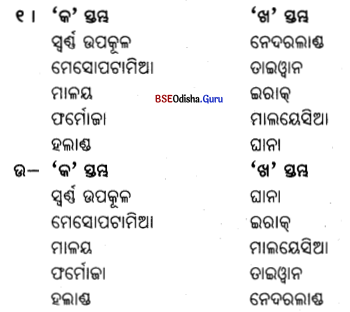
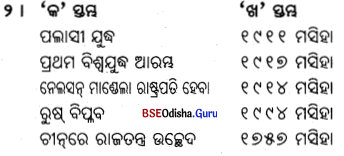
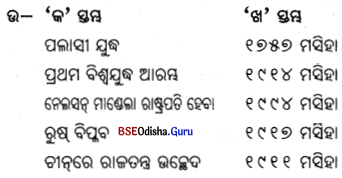

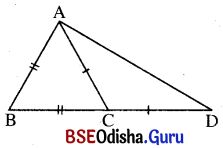
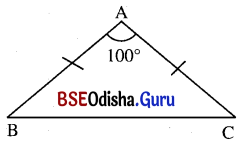
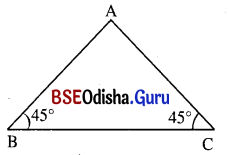
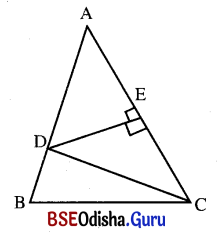 (ପ୍ରମାଣିତ)
(ପ୍ରମାଣିତ)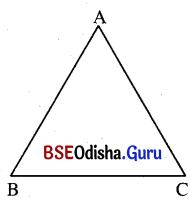 (ପ୍ରମାଣିତ)
(ପ୍ରମାଣିତ)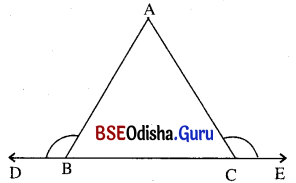 (ପ୍ରମାଣିତ)
(ପ୍ରମାଣିତ)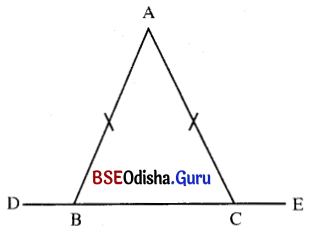 (ପ୍ରମାଣିତ)
(ପ୍ରମାଣିତ)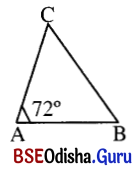 (ପ୍ରମାଣିତ)
(ପ୍ରମାଣିତ)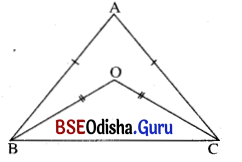
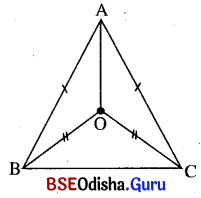
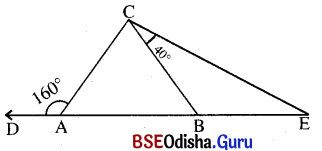 (ପ୍ରମାଣିତ)
(ପ୍ରମାଣିତ)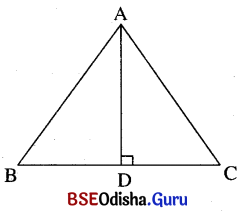 (ପ୍ରମାଣିତ)
(ପ୍ରମାଣିତ)

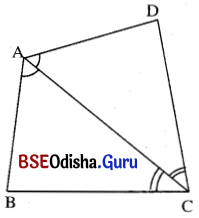 (ପ୍ରମାଣିତ)
(ପ୍ରମାଣିତ) (ପ୍ରମାଣିତ)
(ପ୍ରମାଣିତ)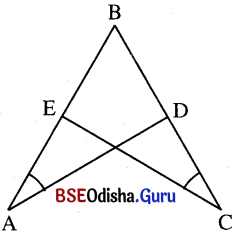 (ପ୍ରମାଣିତ)
(ପ୍ରମାଣିତ)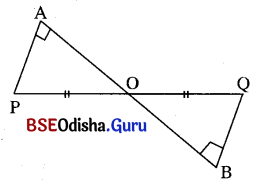 (ପ୍ରମାଣିତ)
(ପ୍ରମାଣିତ)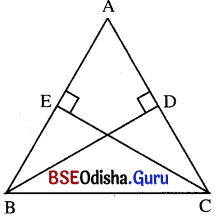 (ପ୍ରମାଣିତ)
(ପ୍ରମାଣିତ)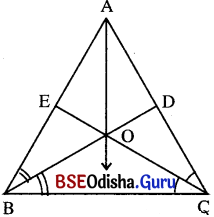 (ପ୍ରମାଣିତ)
(ପ୍ରମାଣିତ)
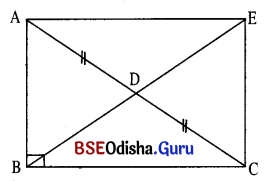 (ପ୍ରମାଣିତ)
(ପ୍ରମାଣିତ)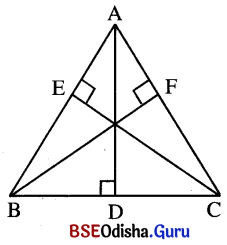 (ପ୍ରମାଣିତ)
(ପ୍ରମାଣିତ)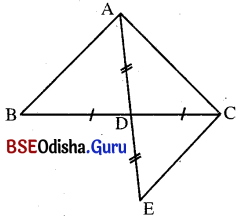 (ପ୍ରମାଣିତ)
(ପ୍ରମାଣିତ)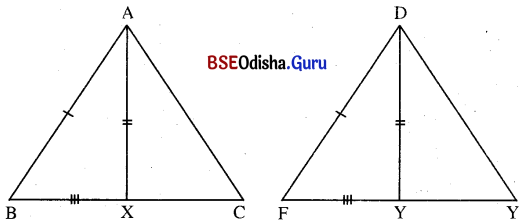
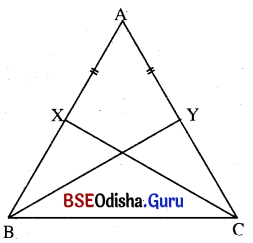 (ପ୍ରମାଣିତ)
(ପ୍ରମାଣିତ)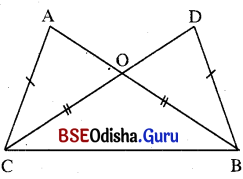 (ପ୍ରମାଣିତ)
(ପ୍ରମାଣିତ)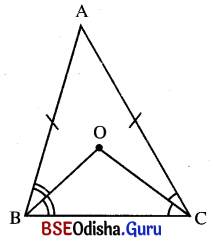 (ପ୍ରମାଣିତ)
(ପ୍ରମାଣିତ) (ପ୍ରମାଣିତ)
(ପ୍ରମାଣିତ)